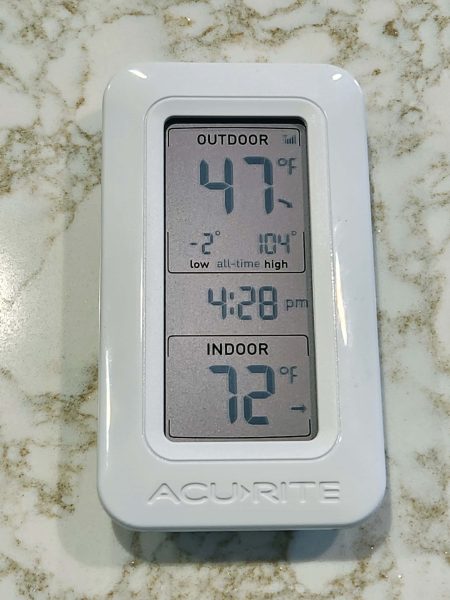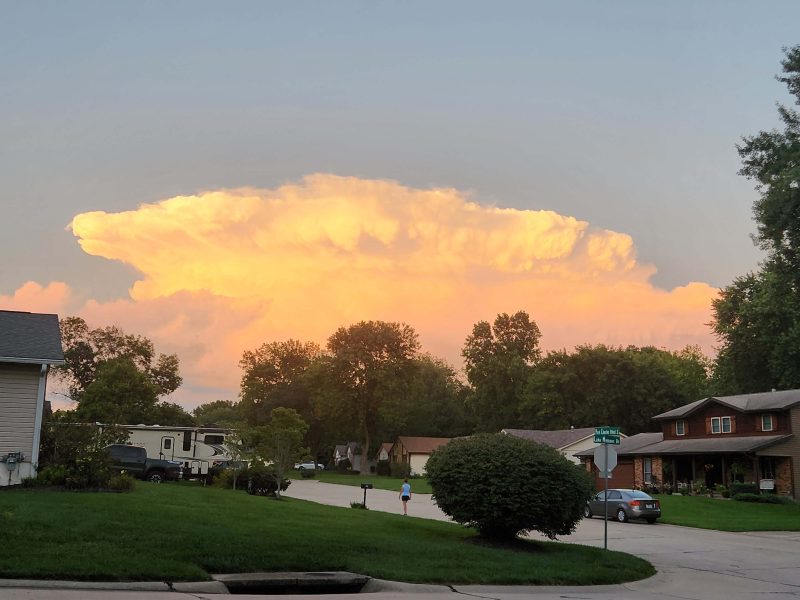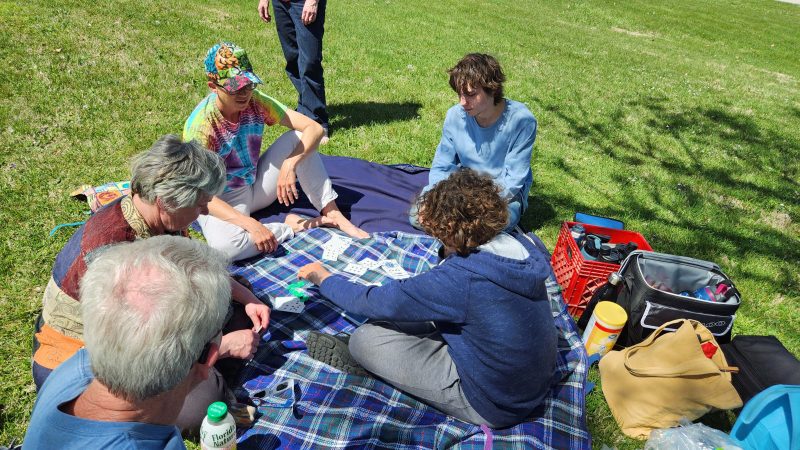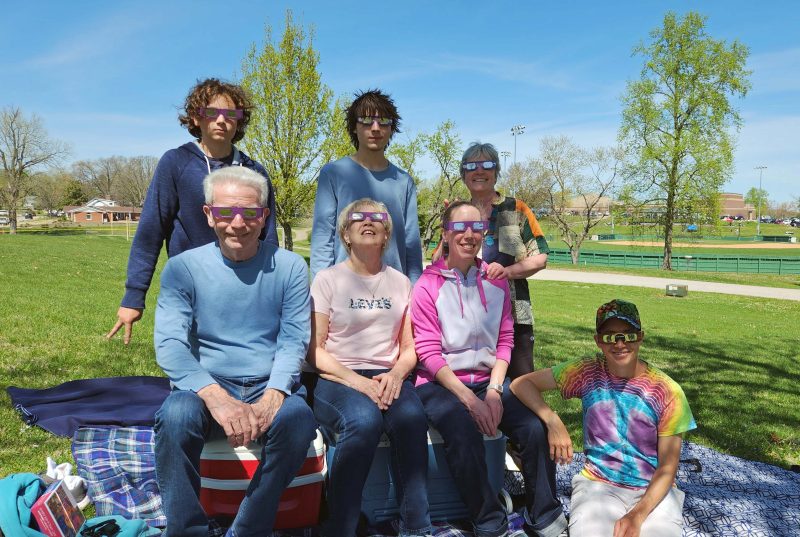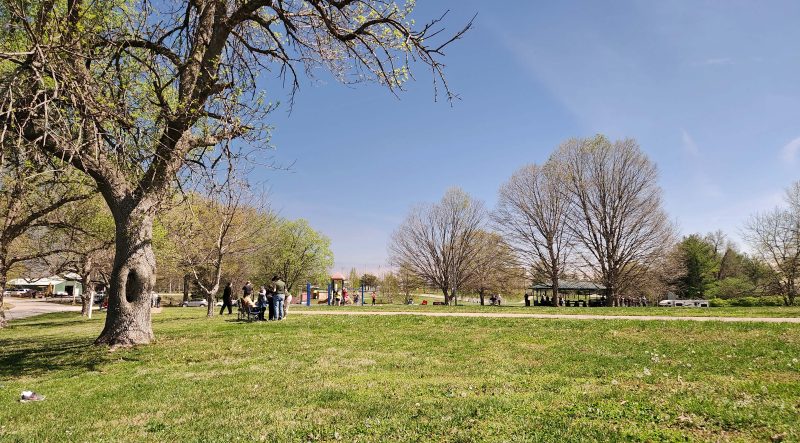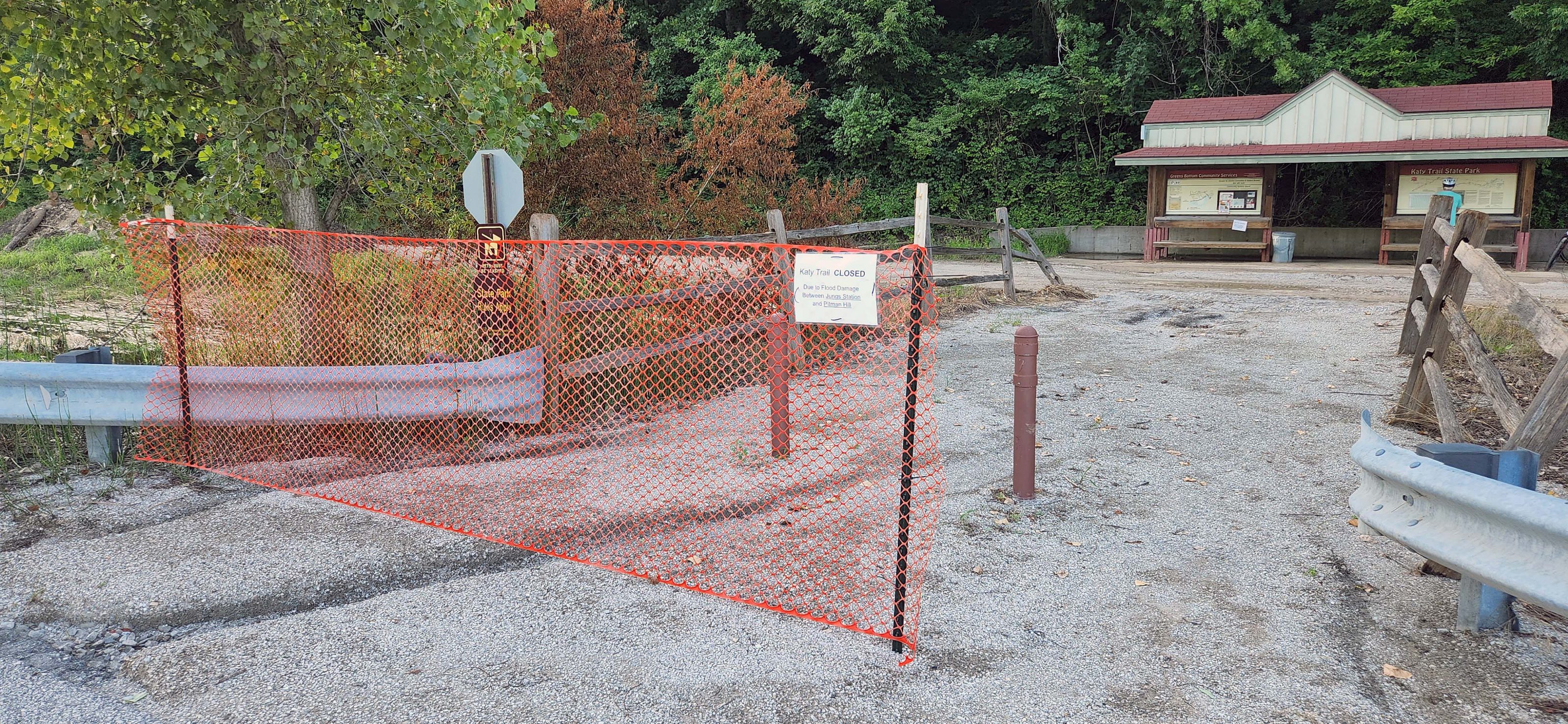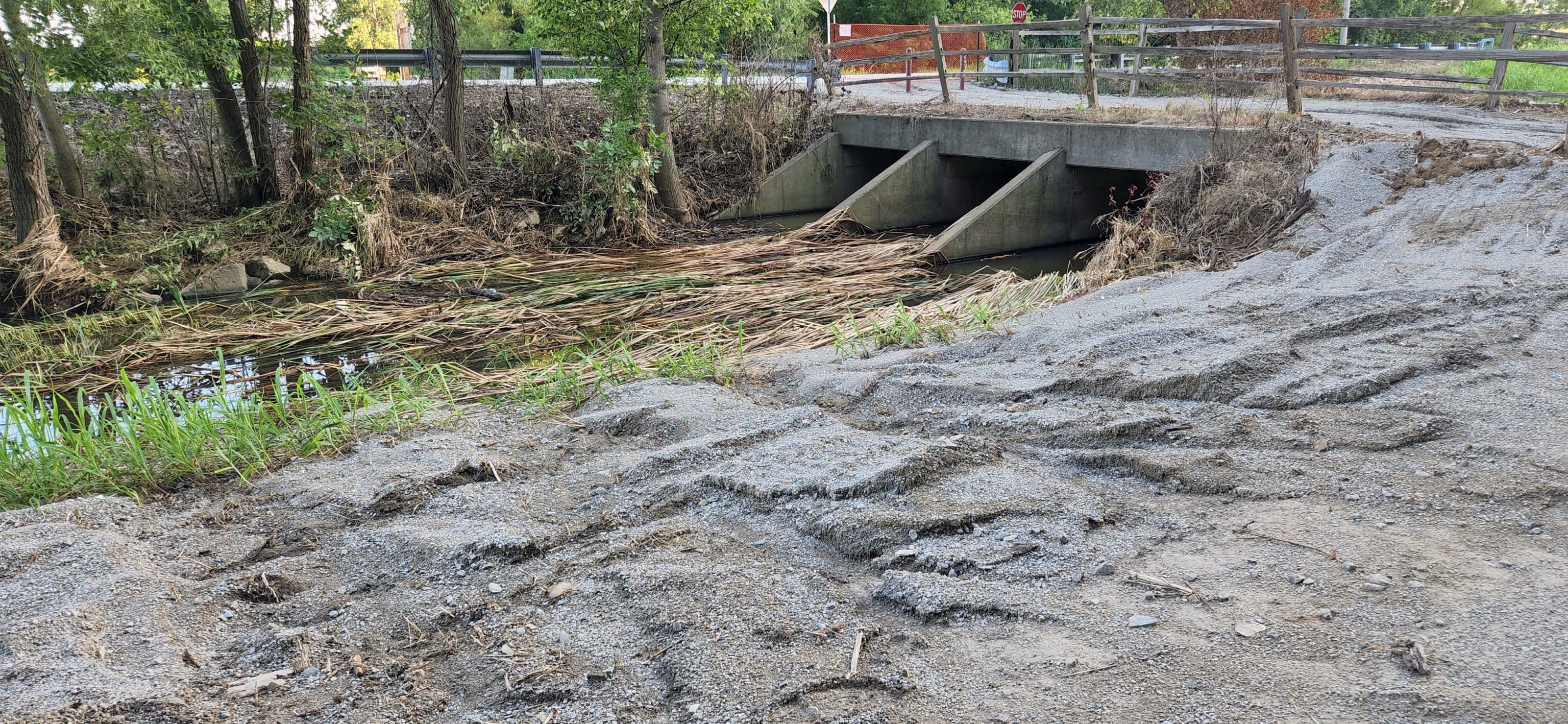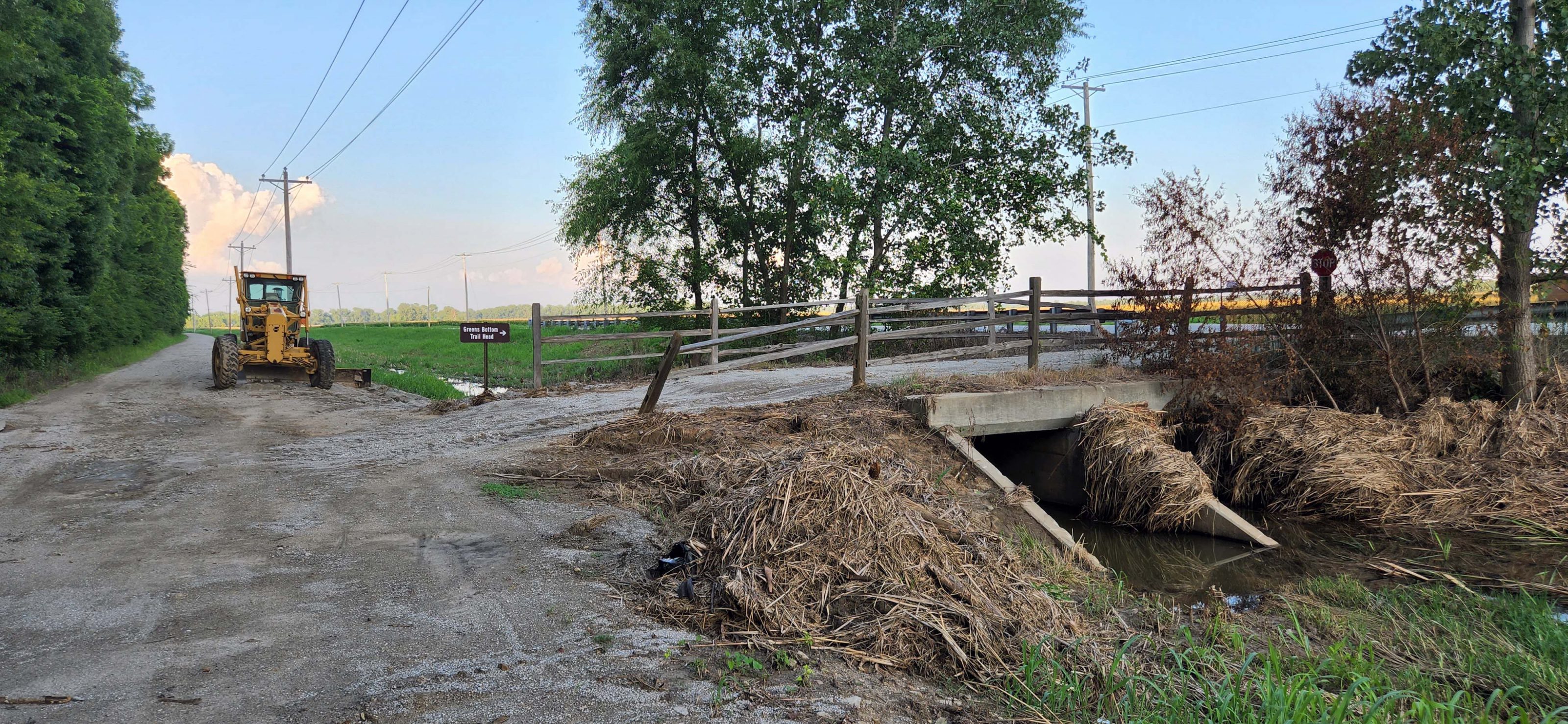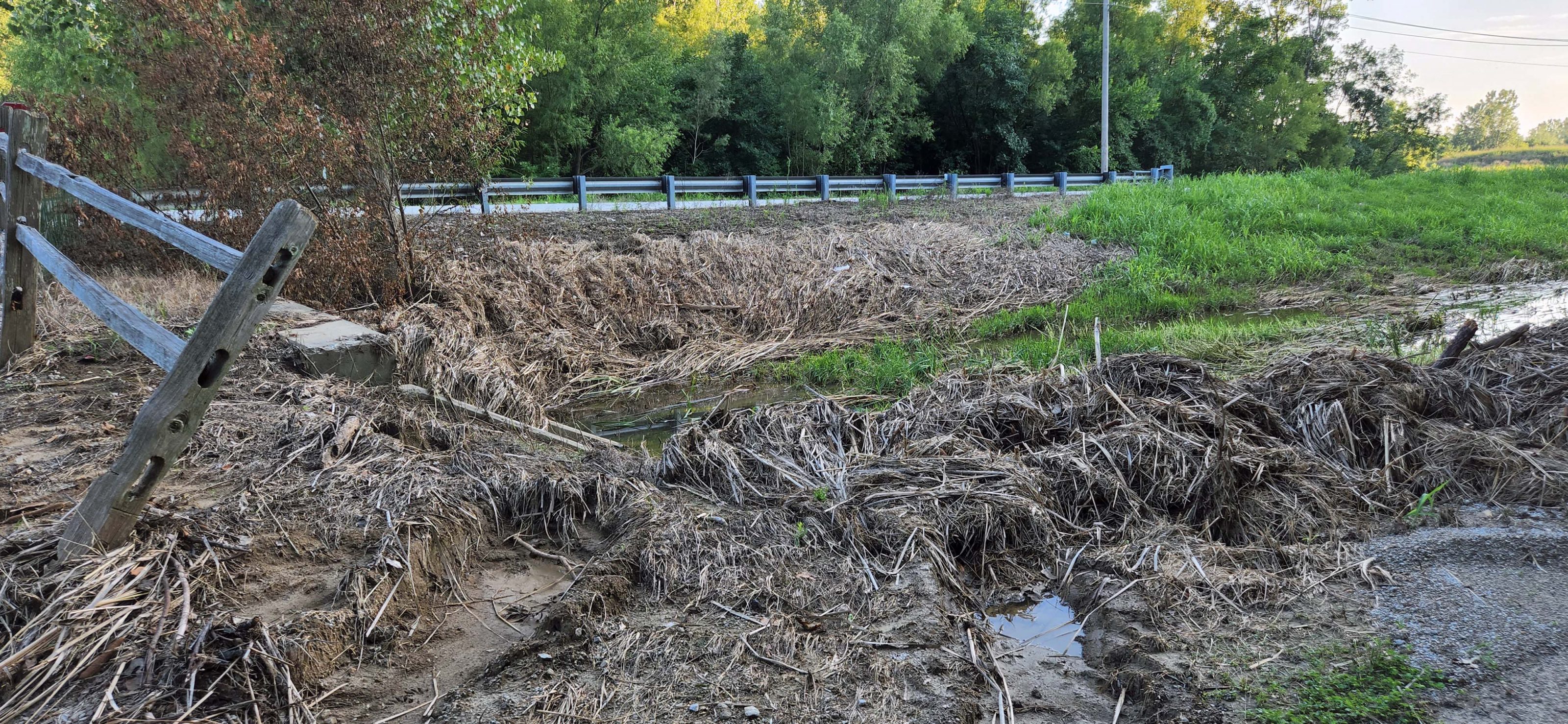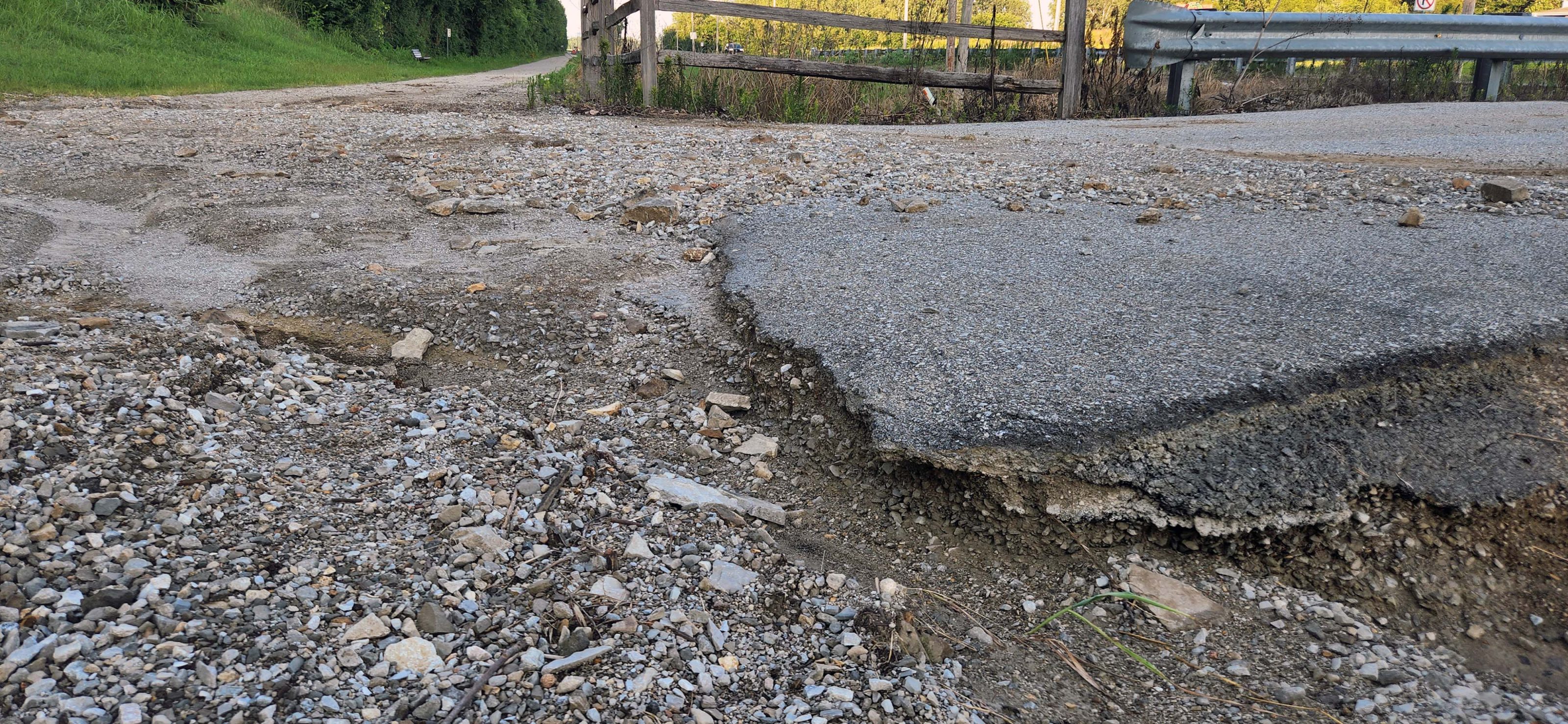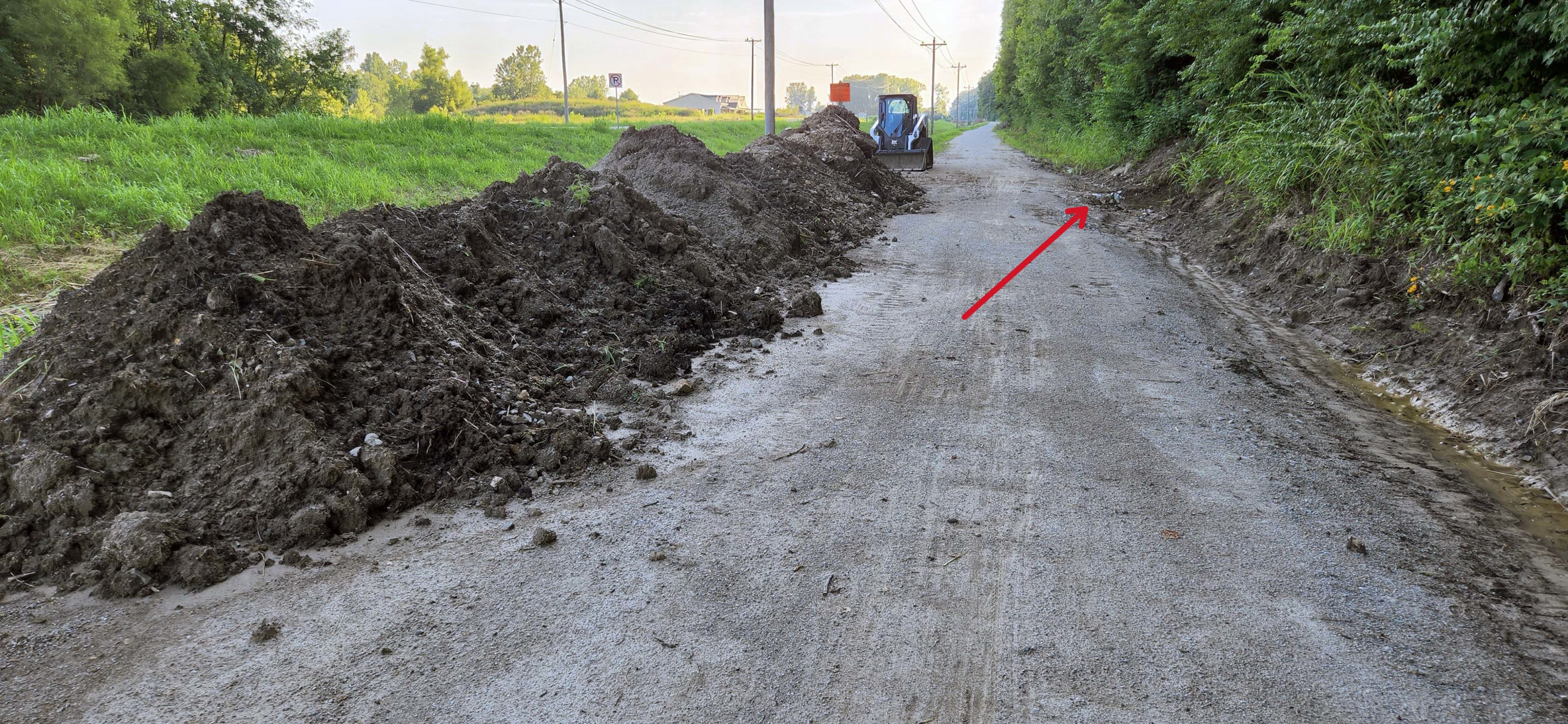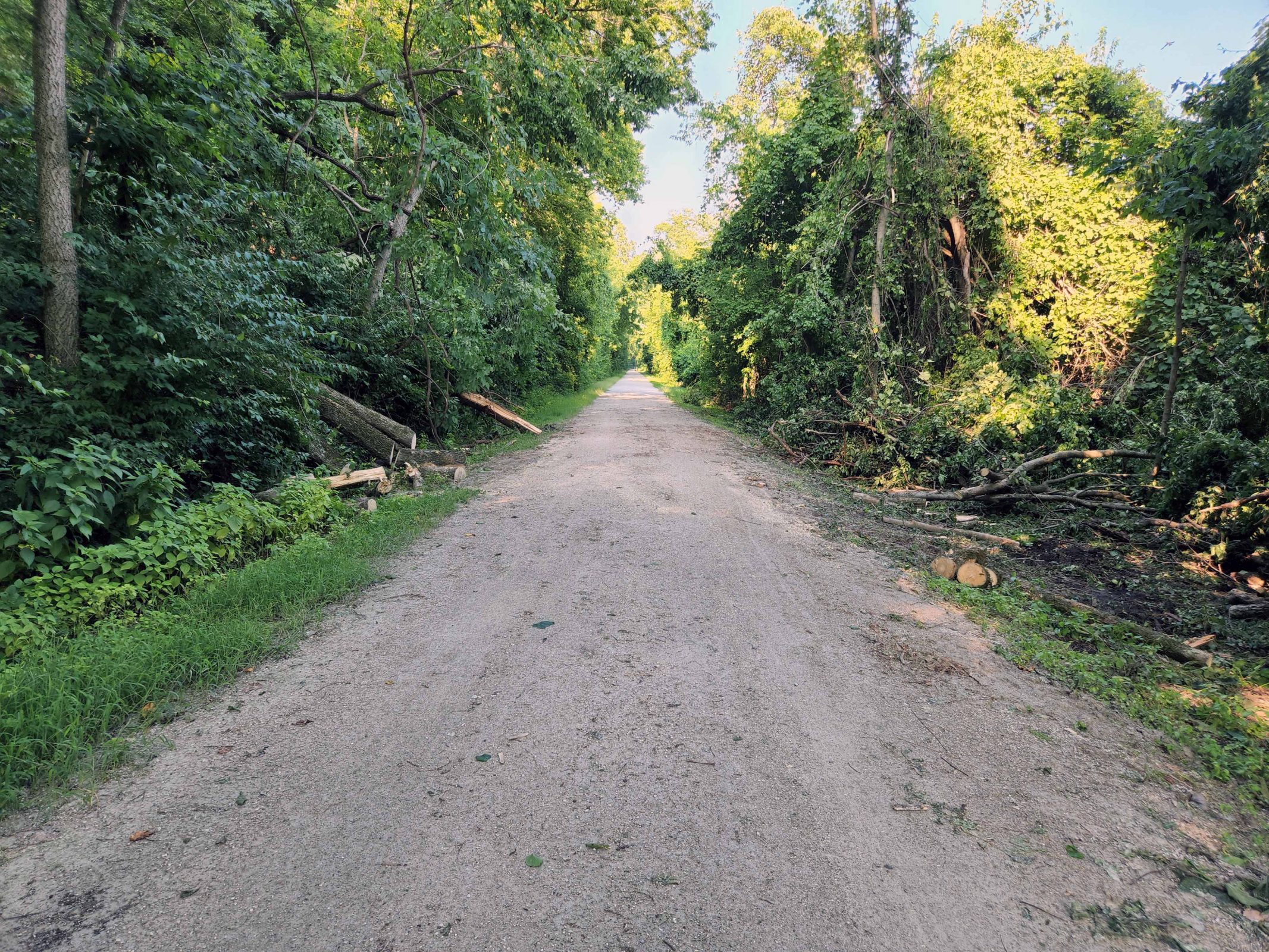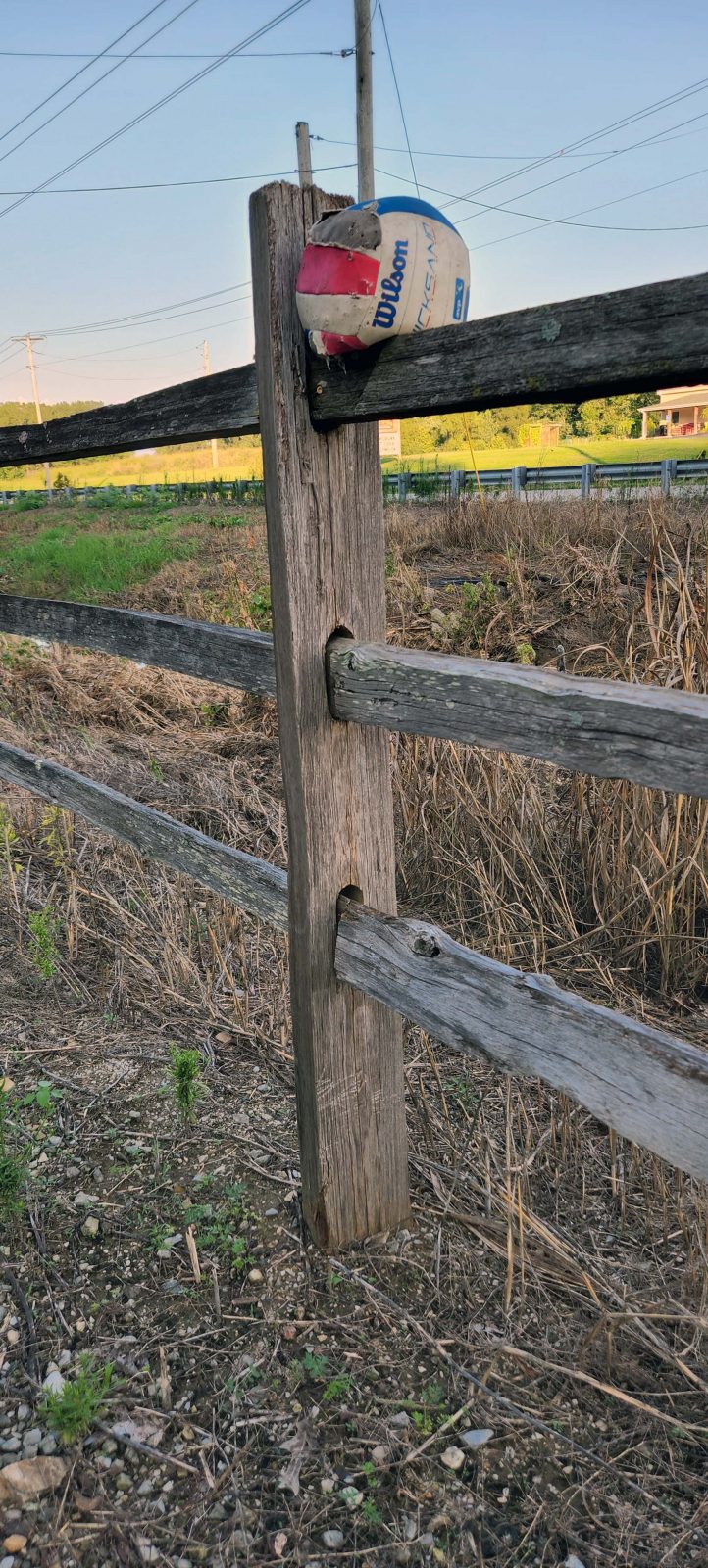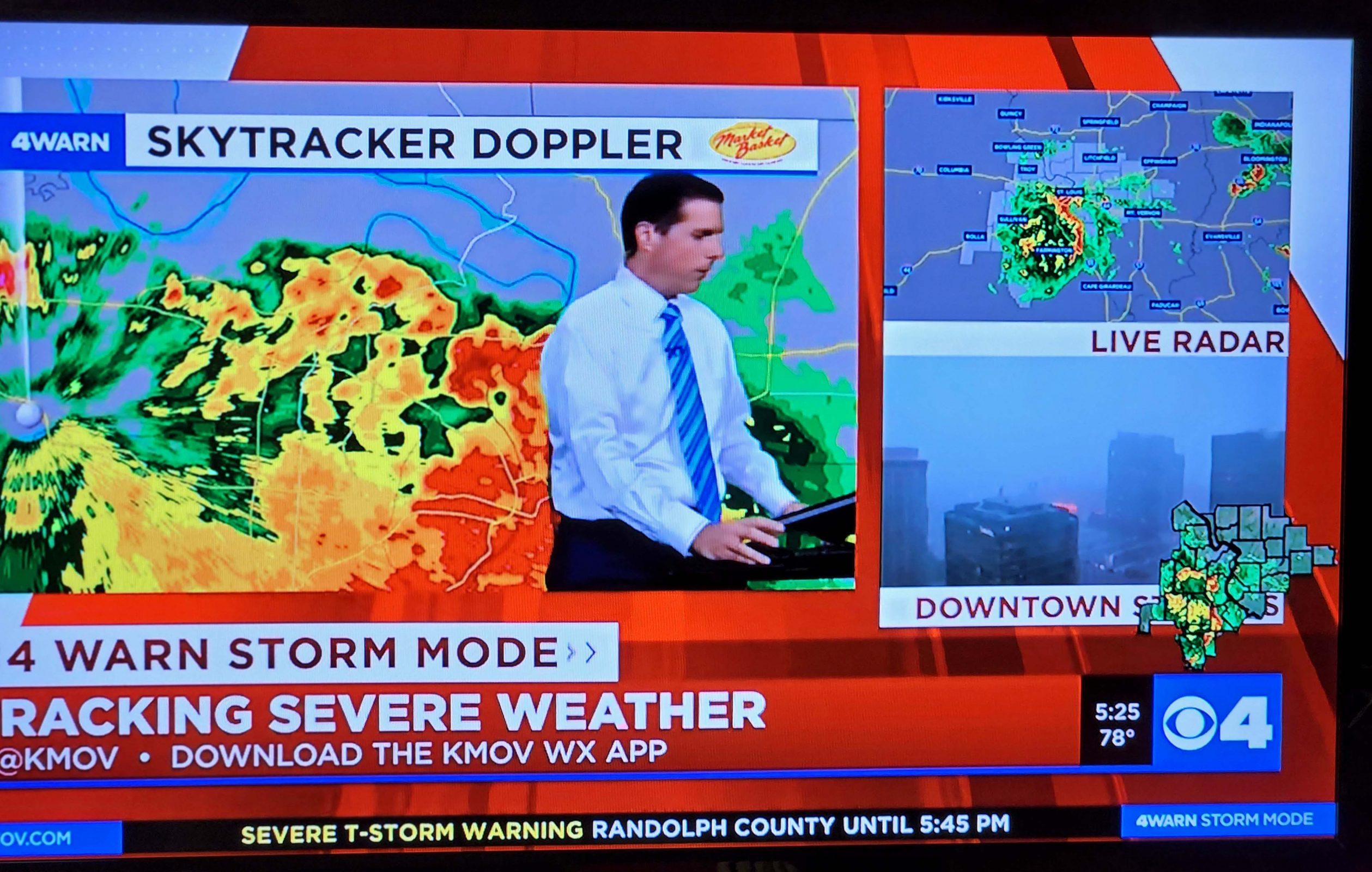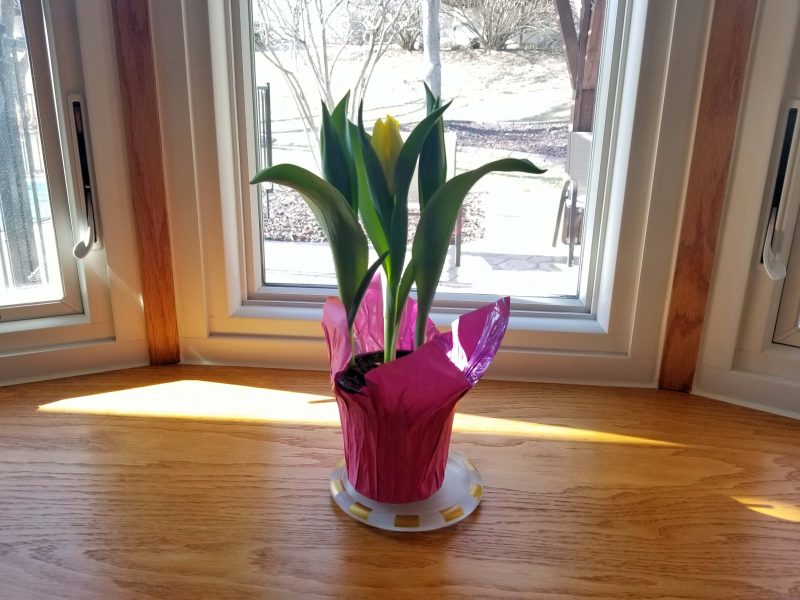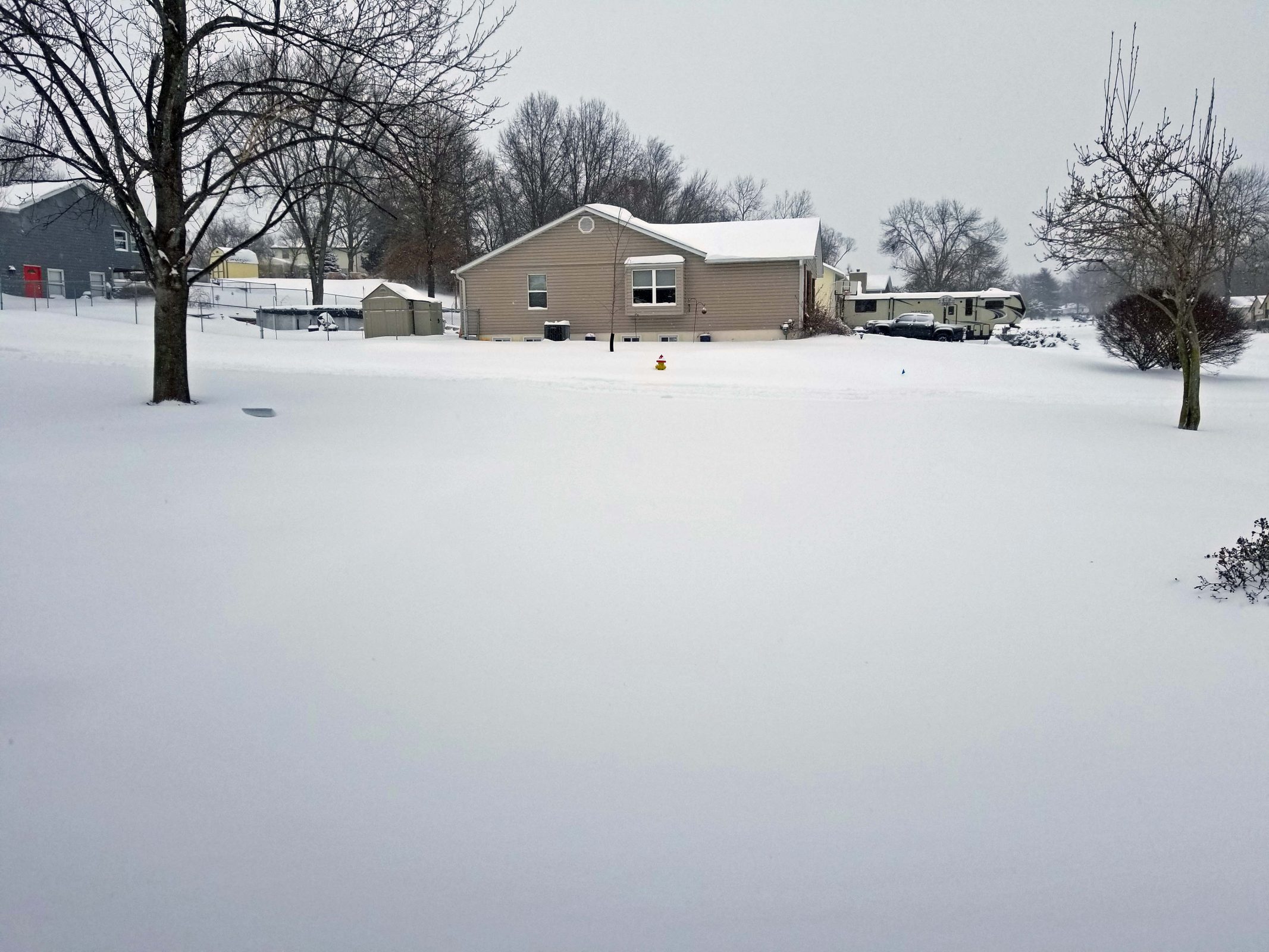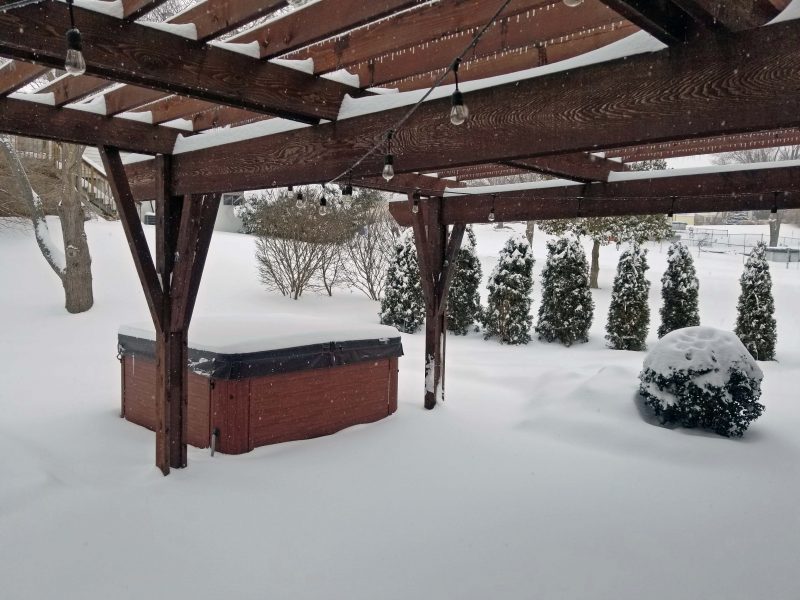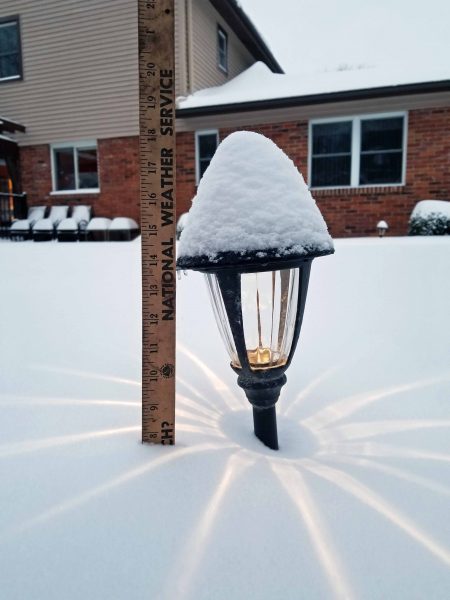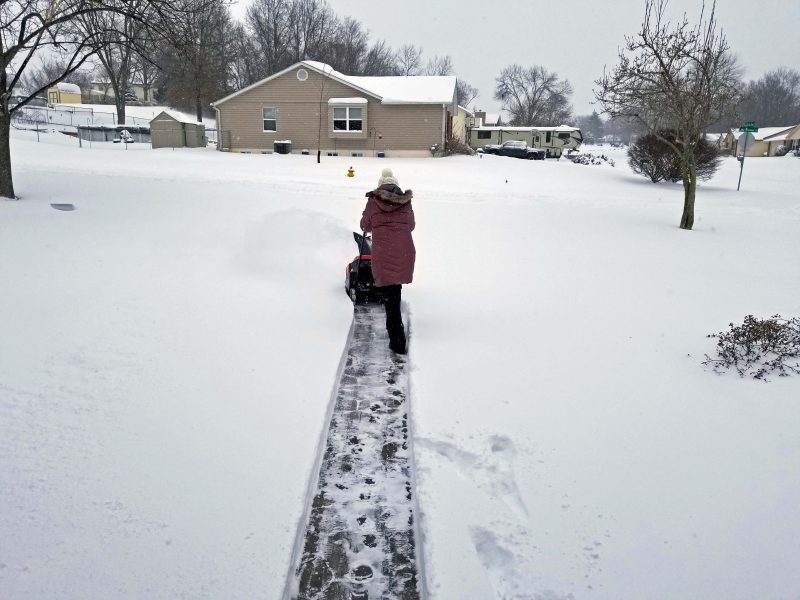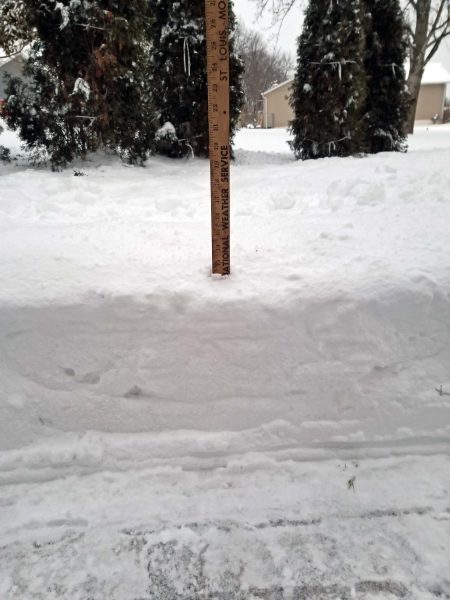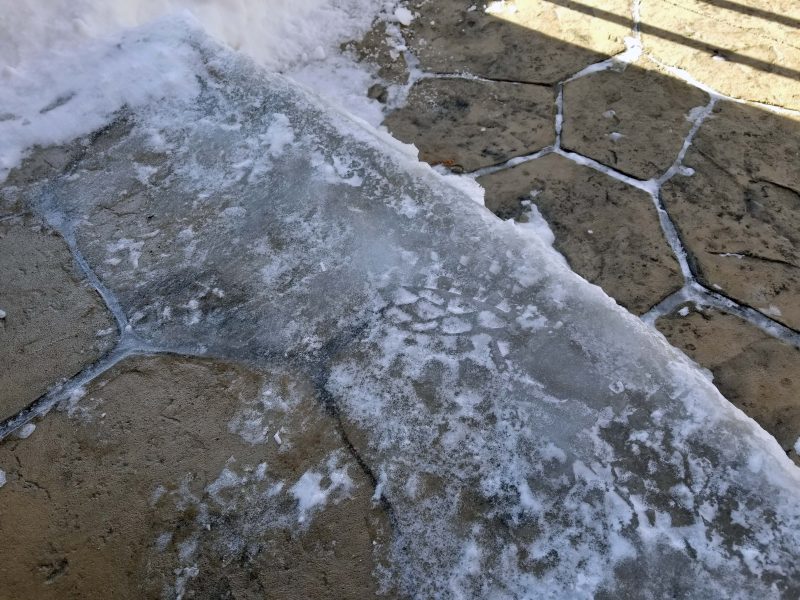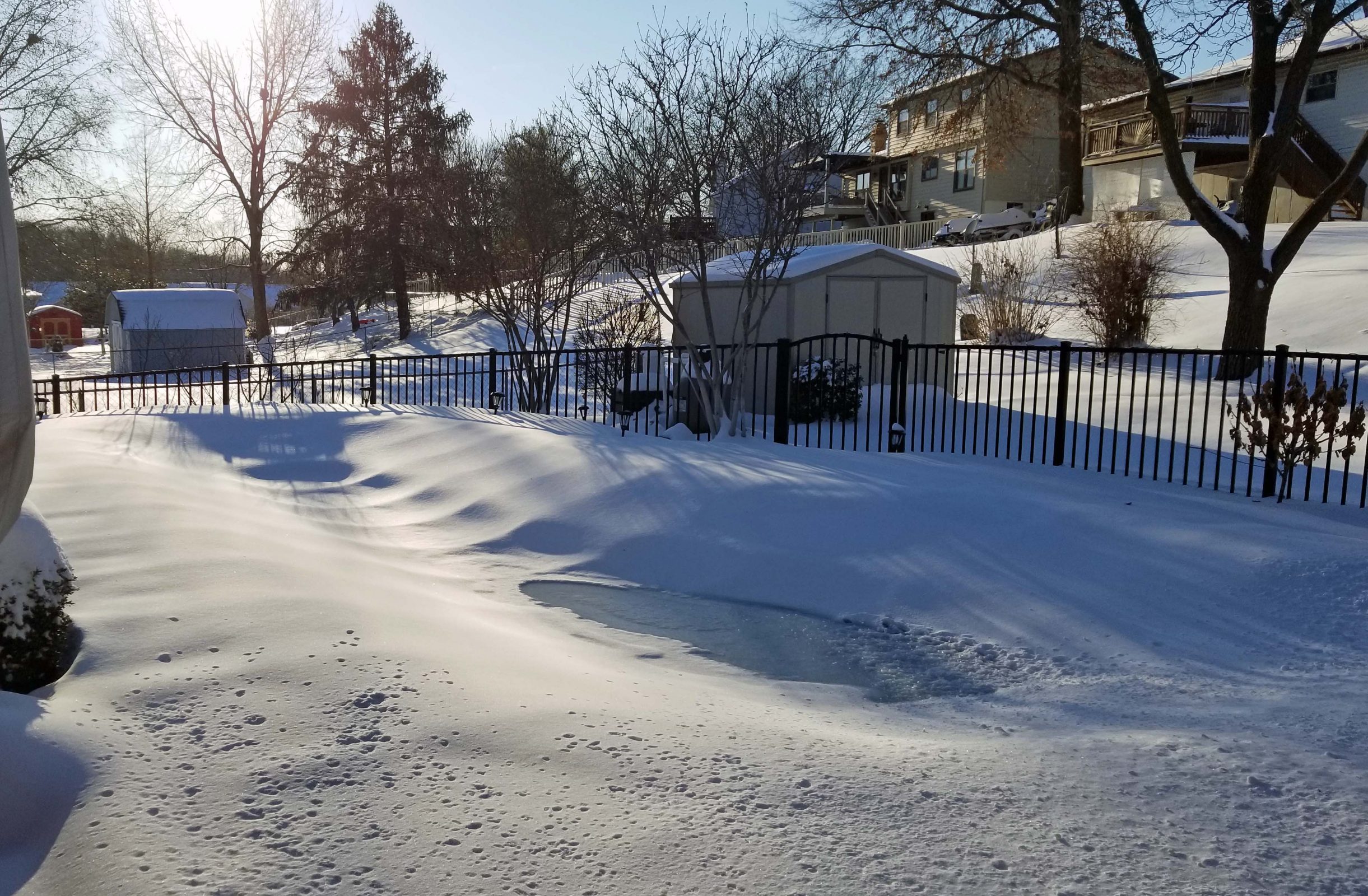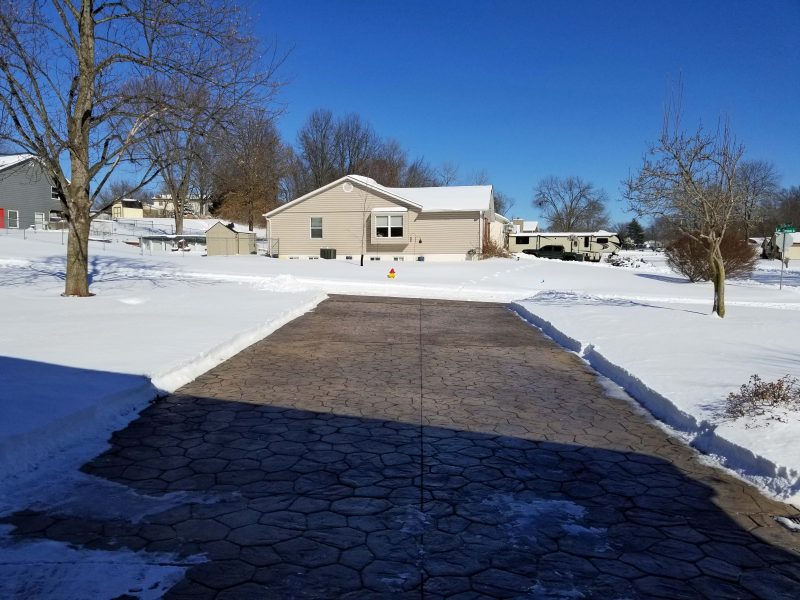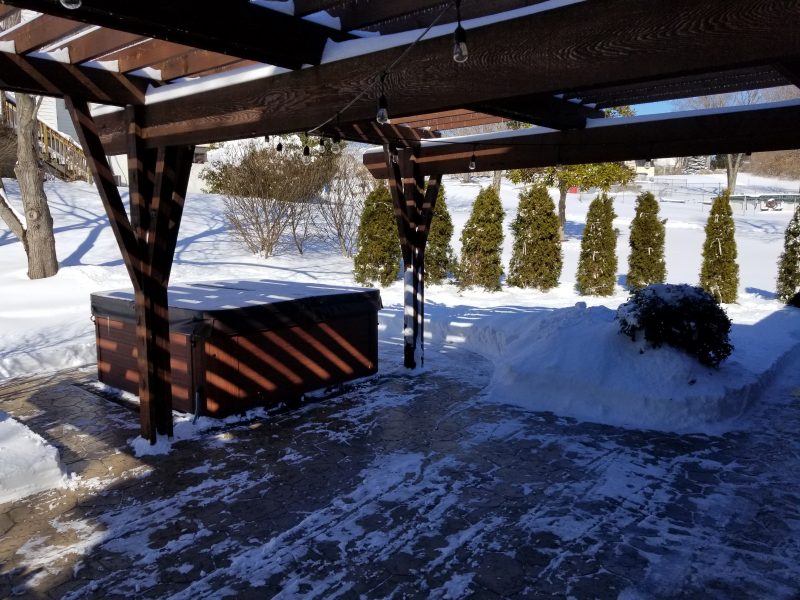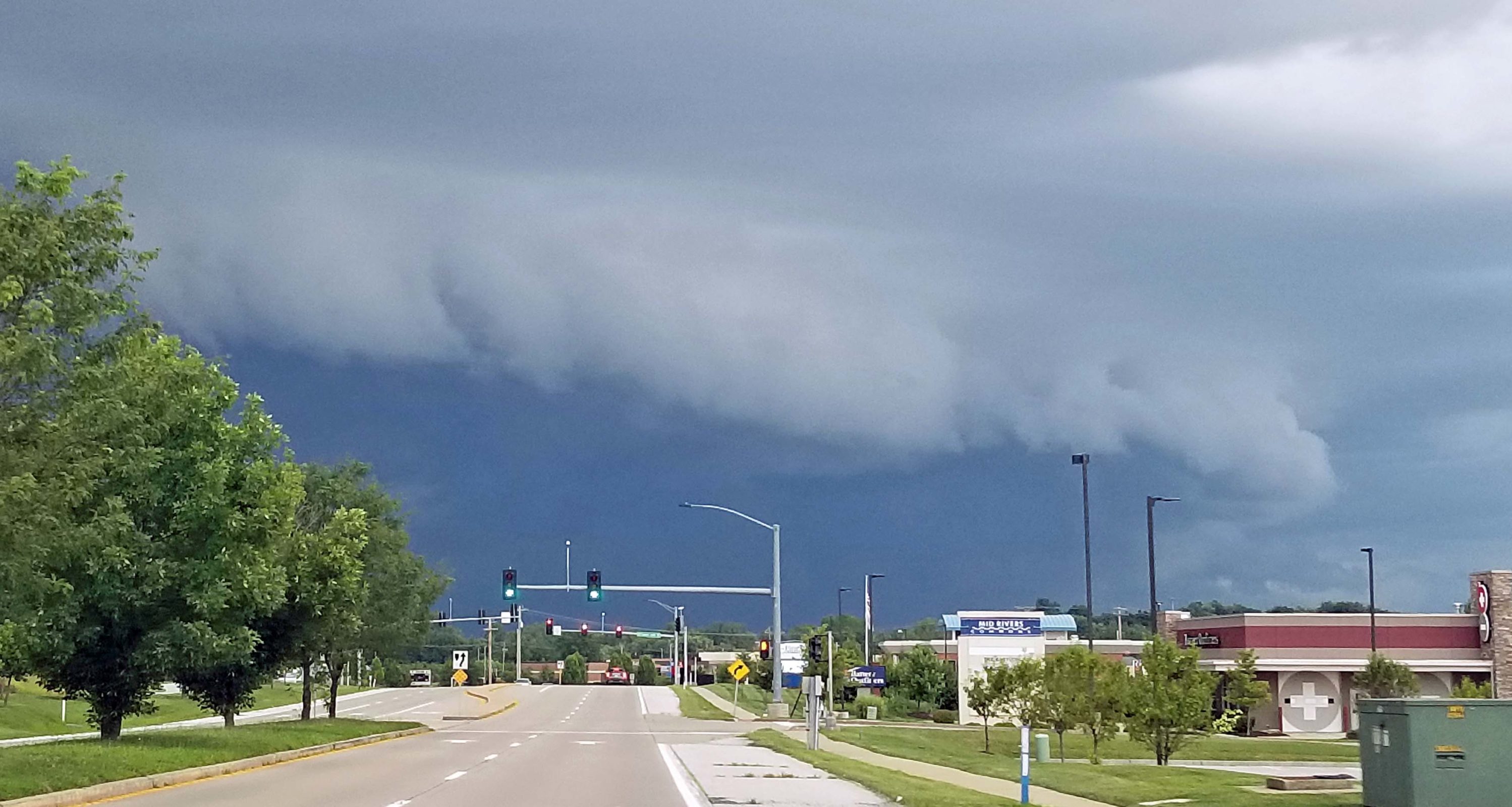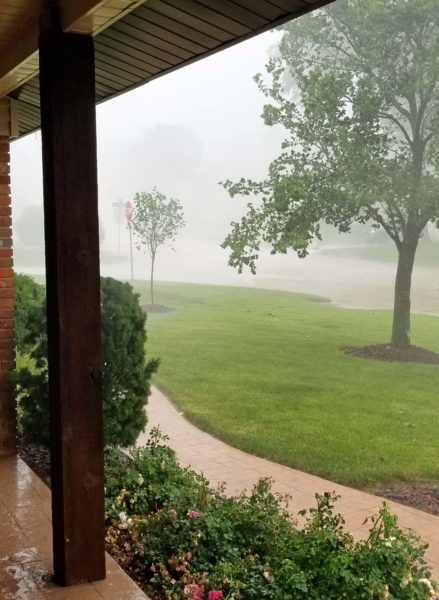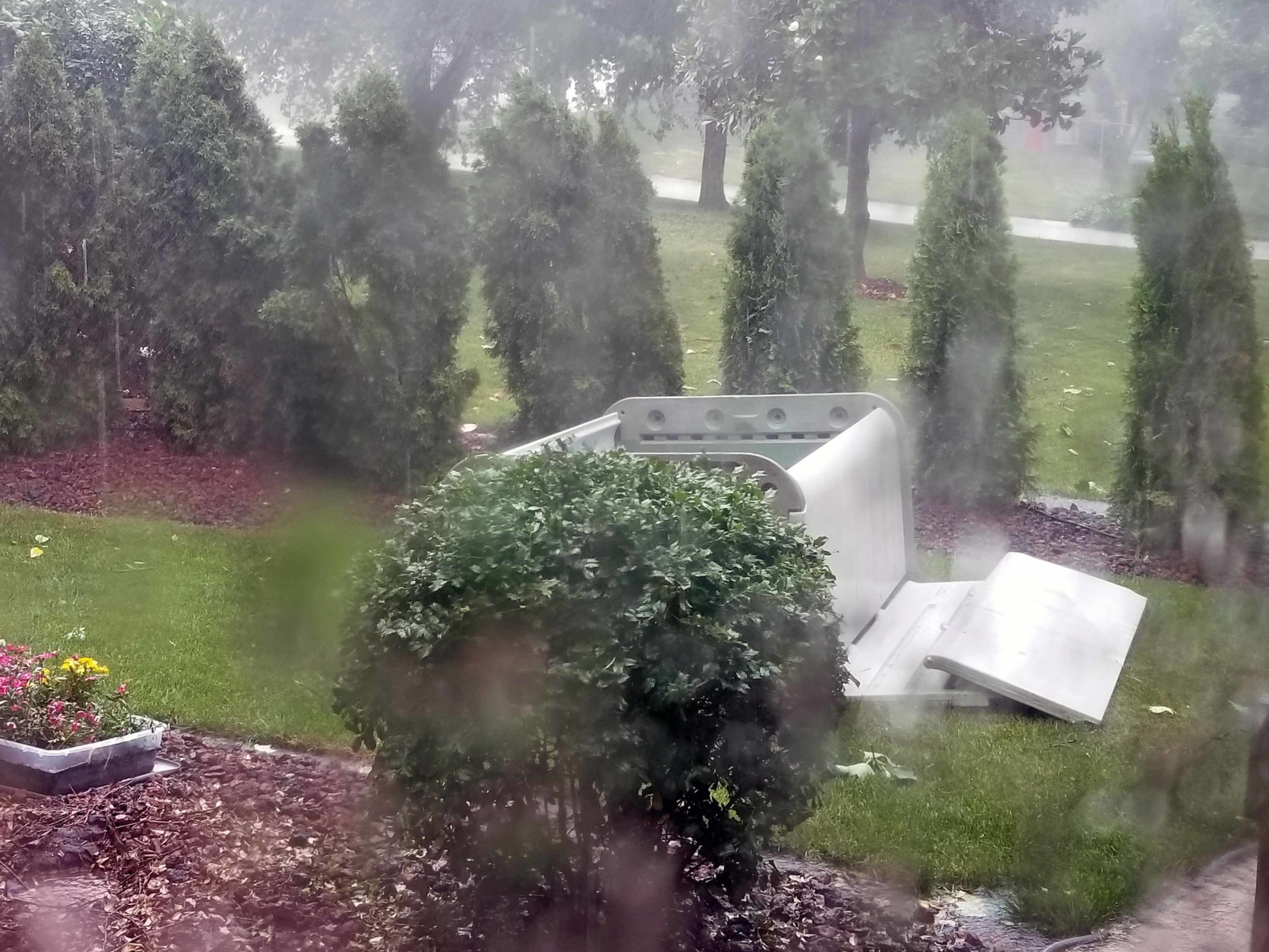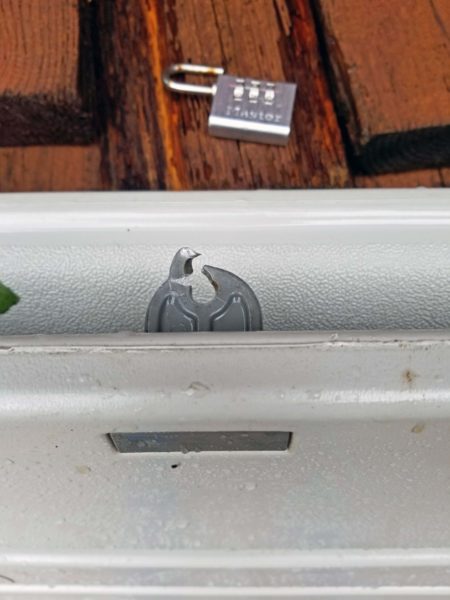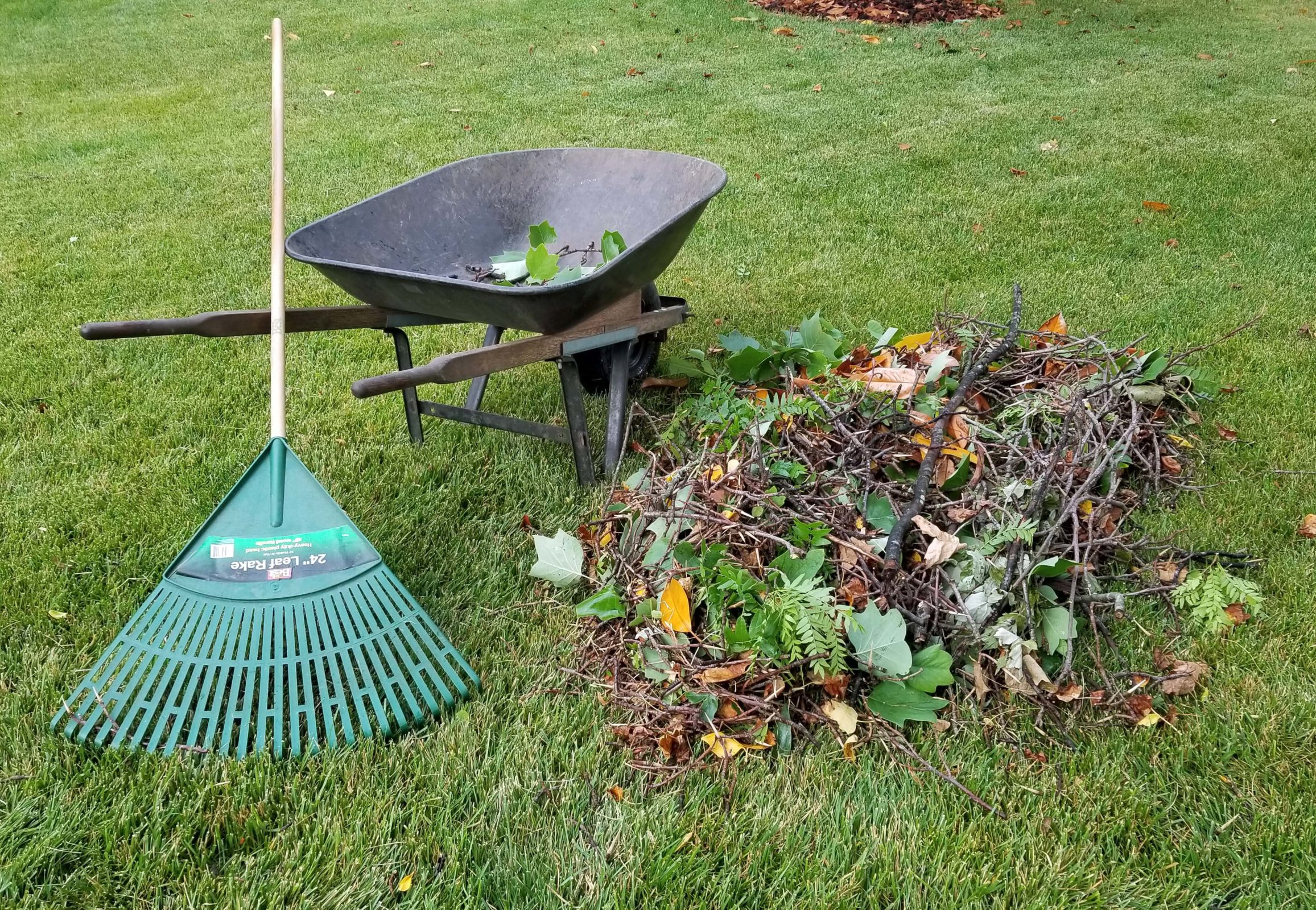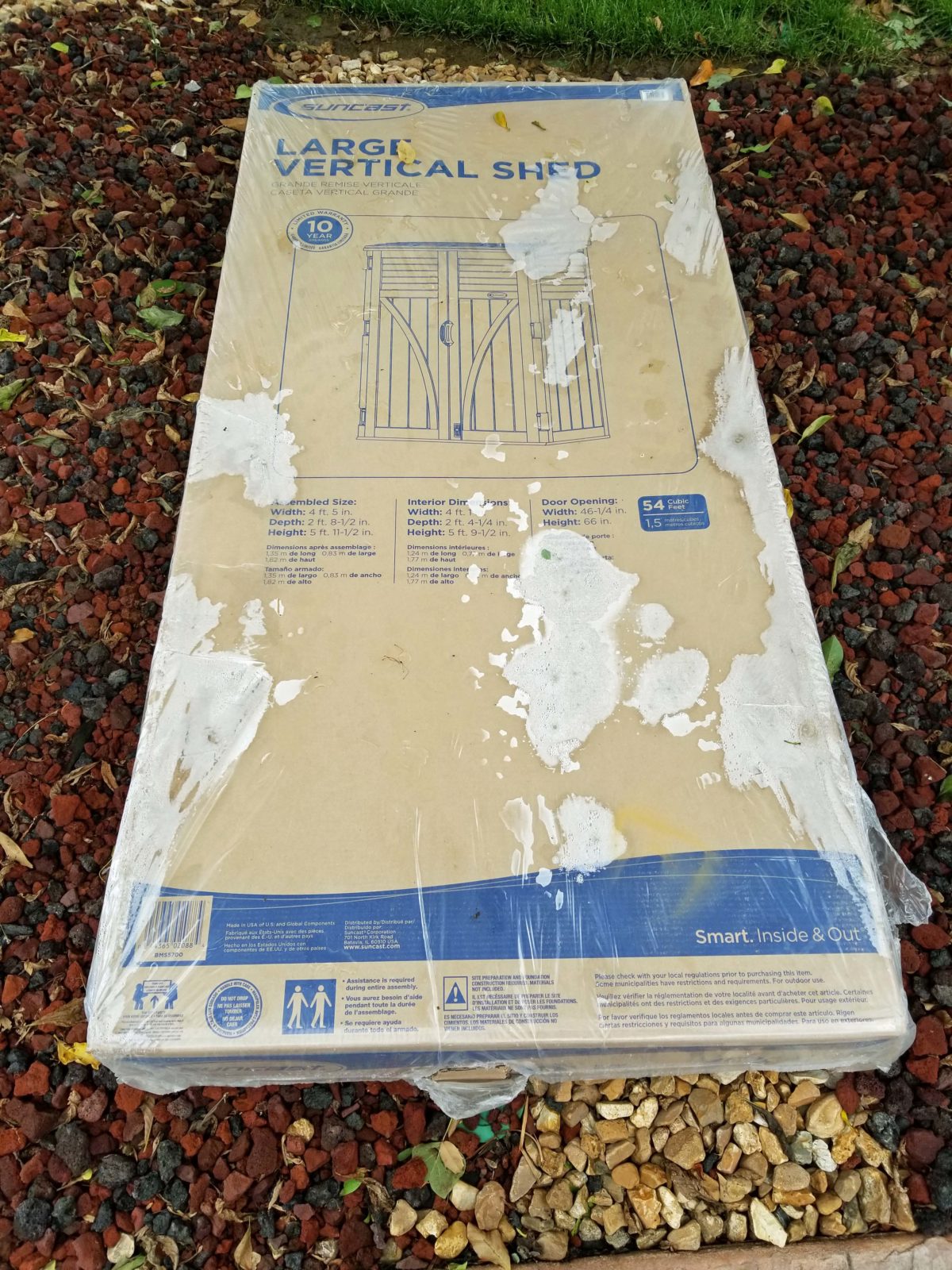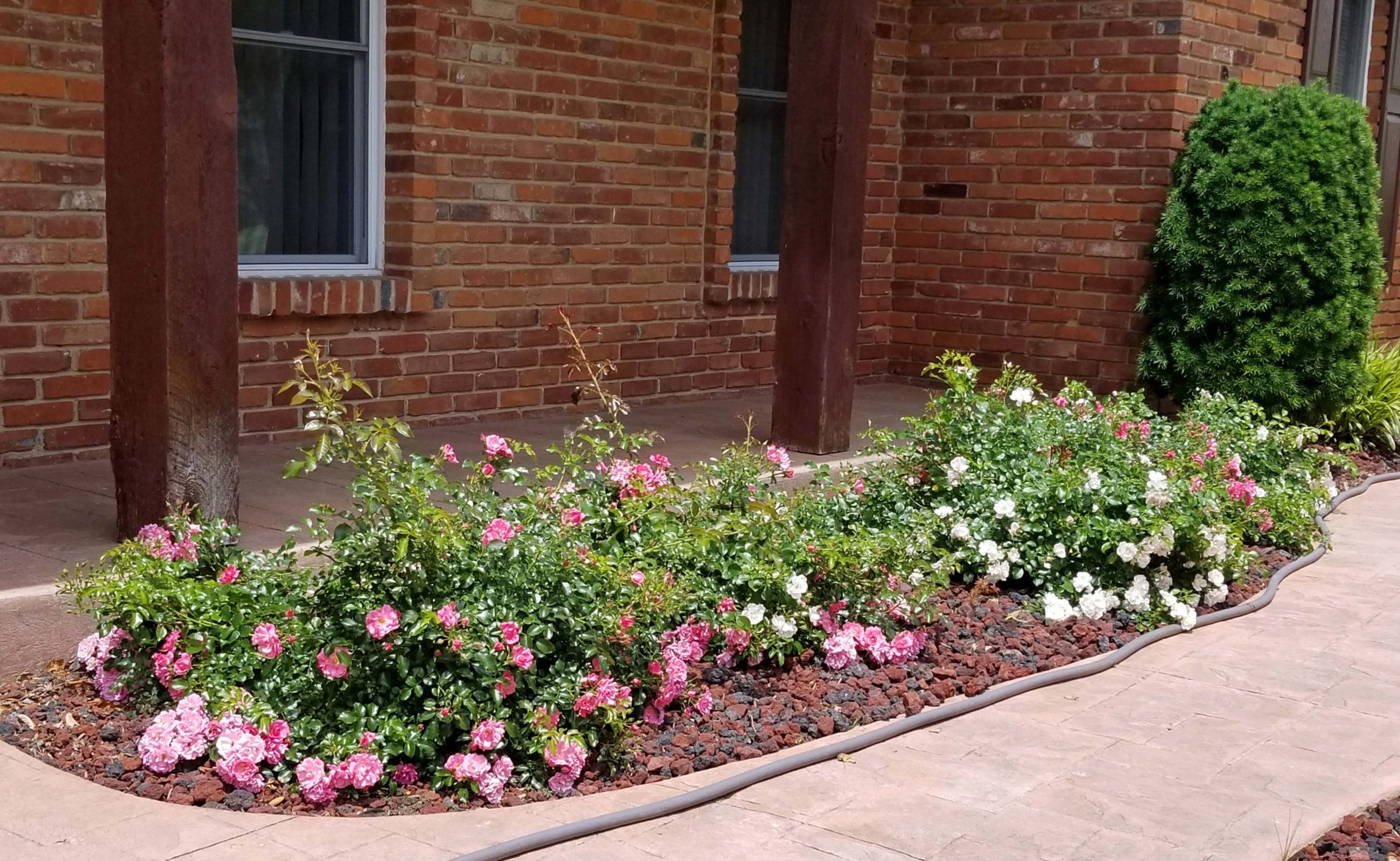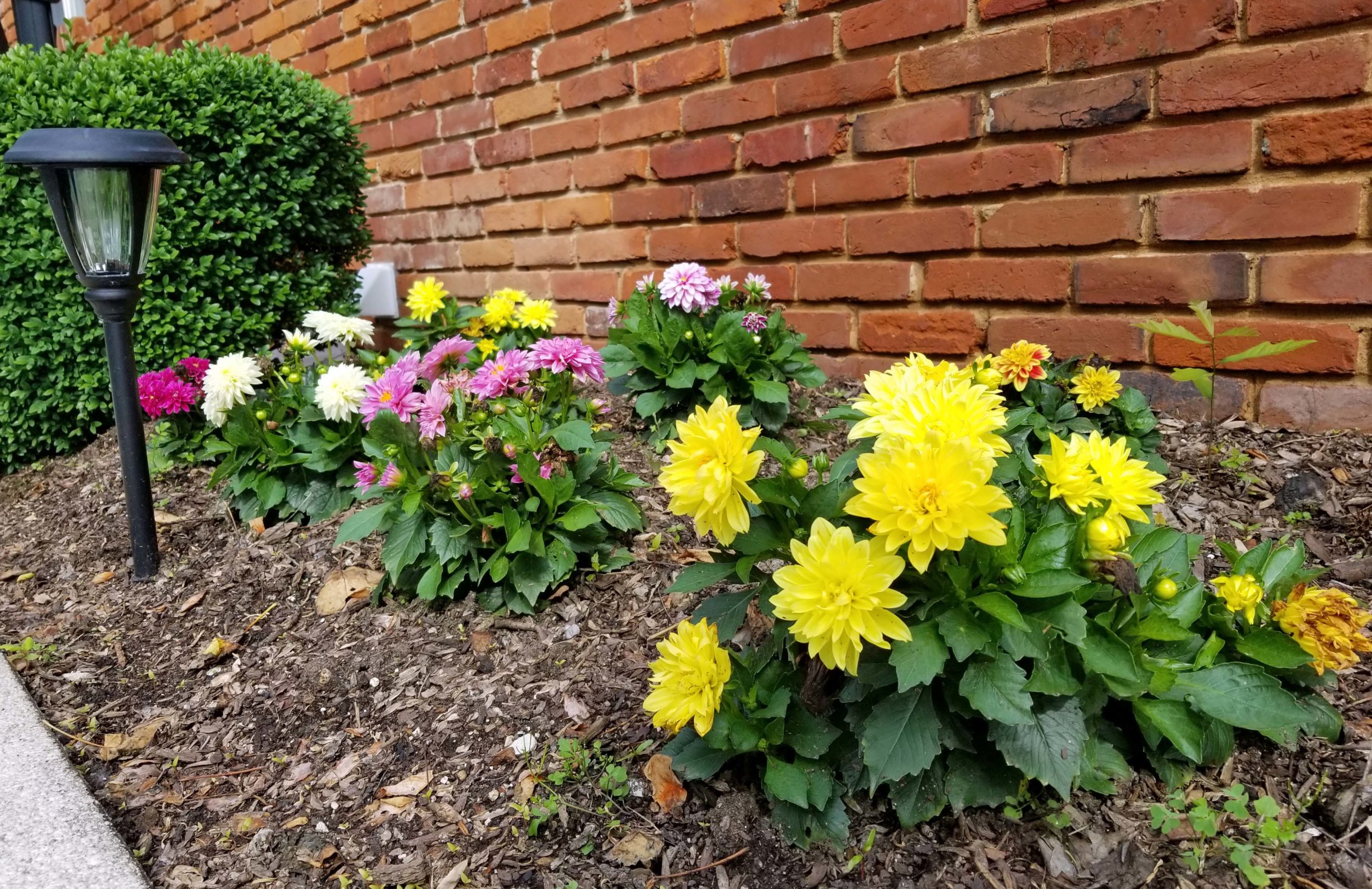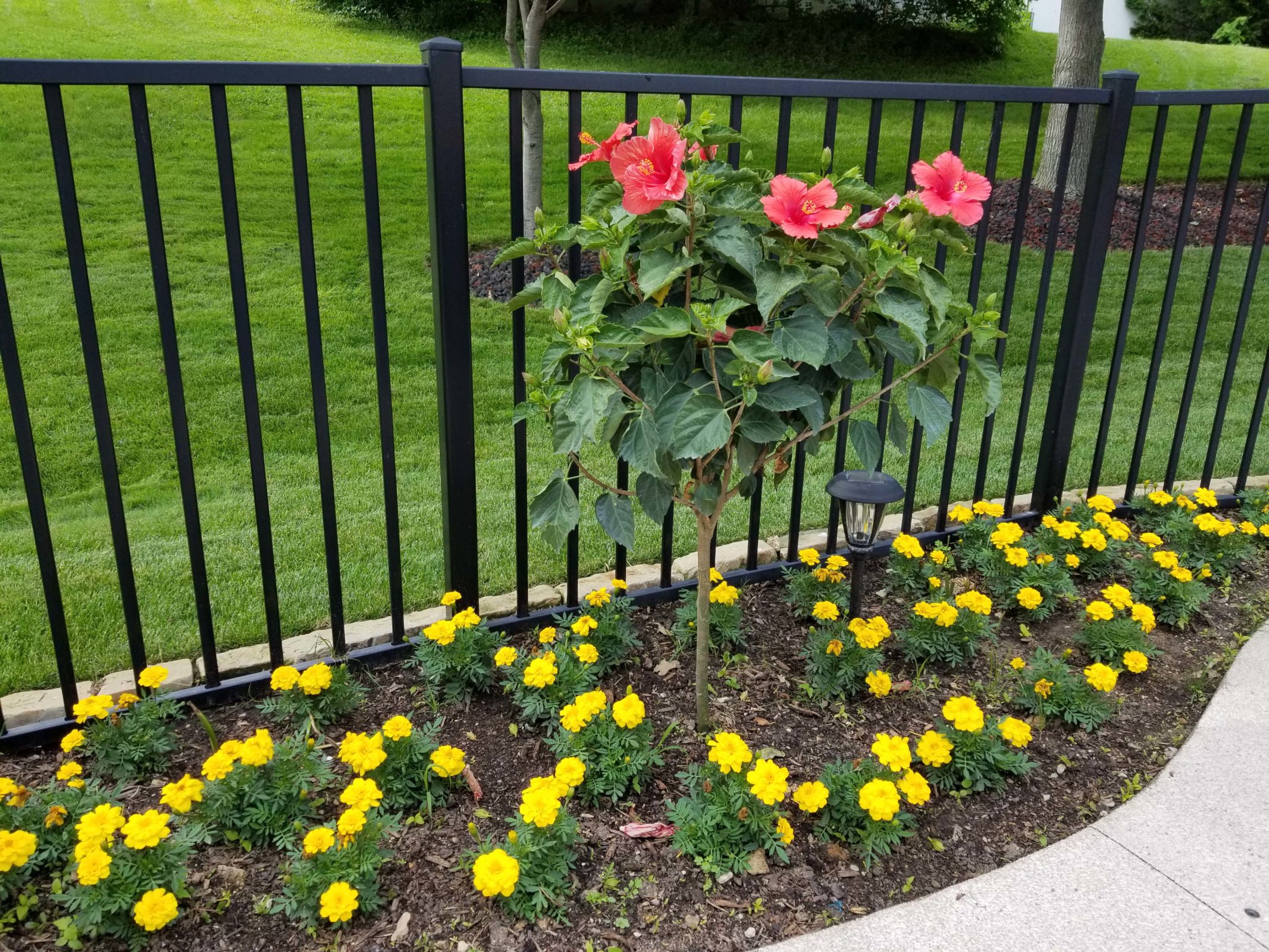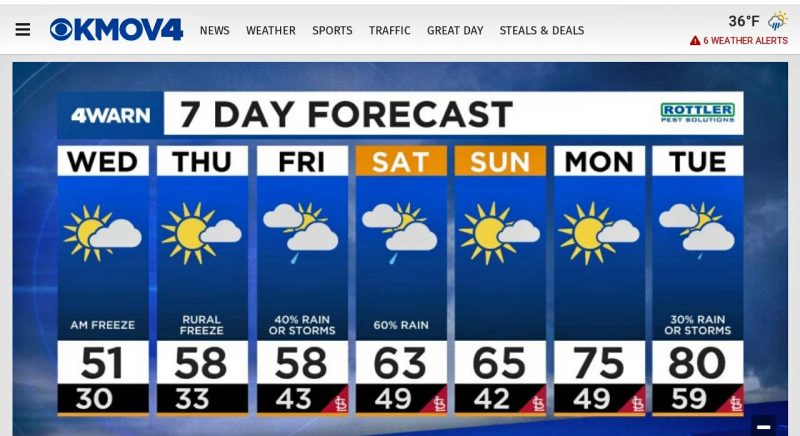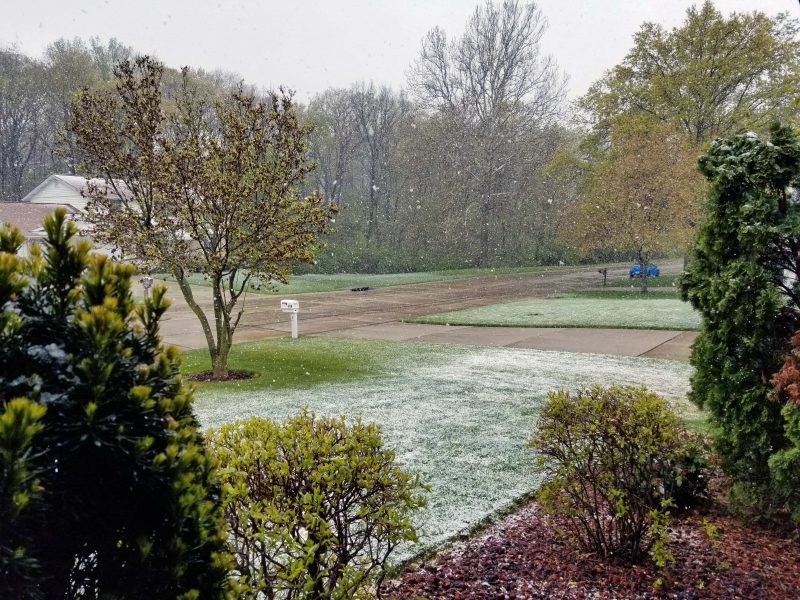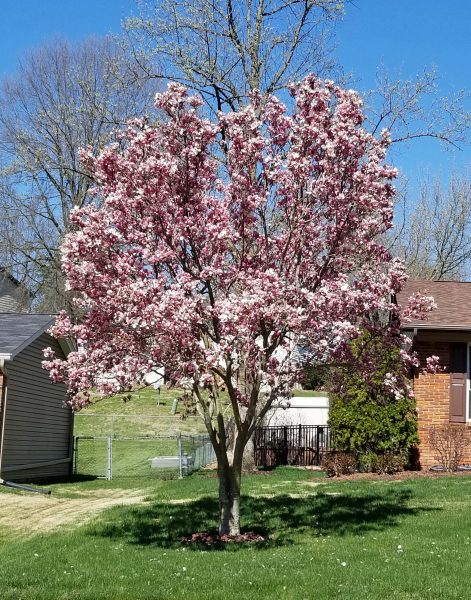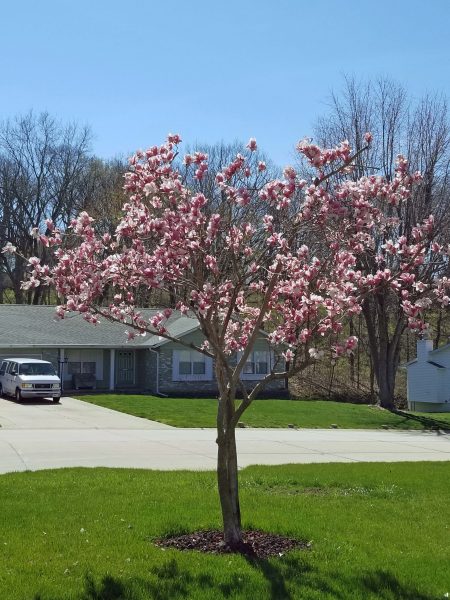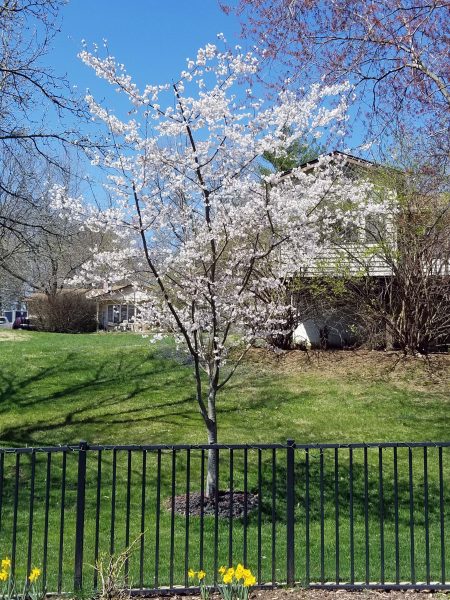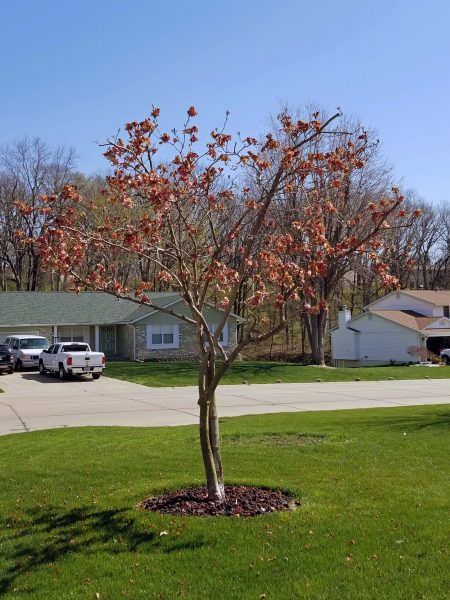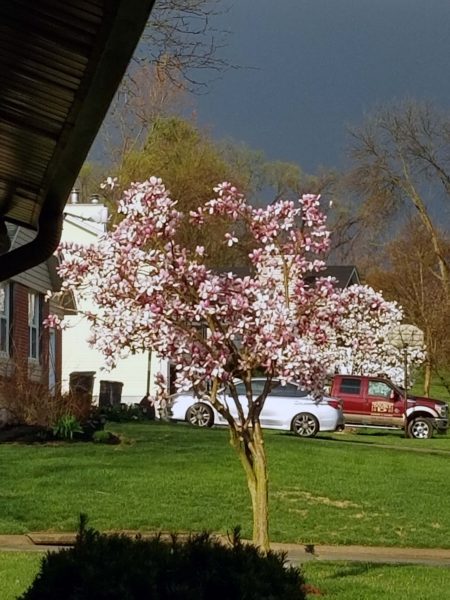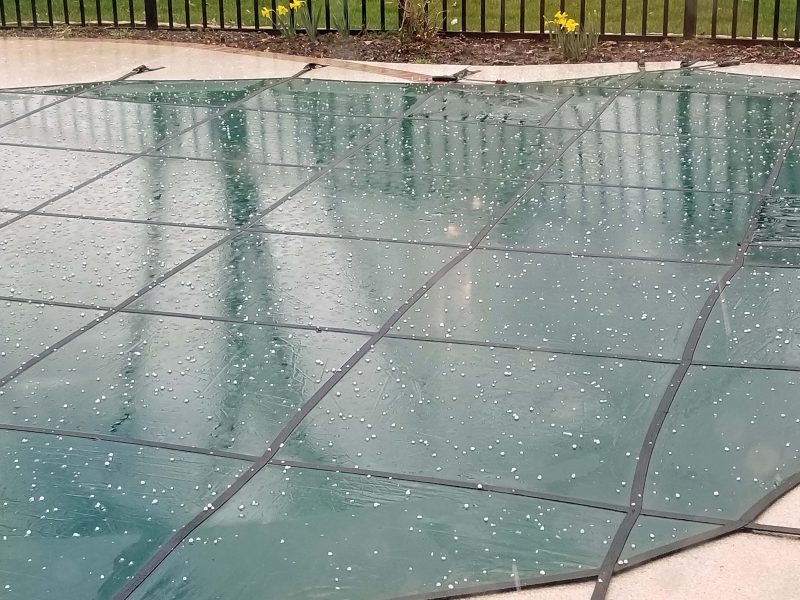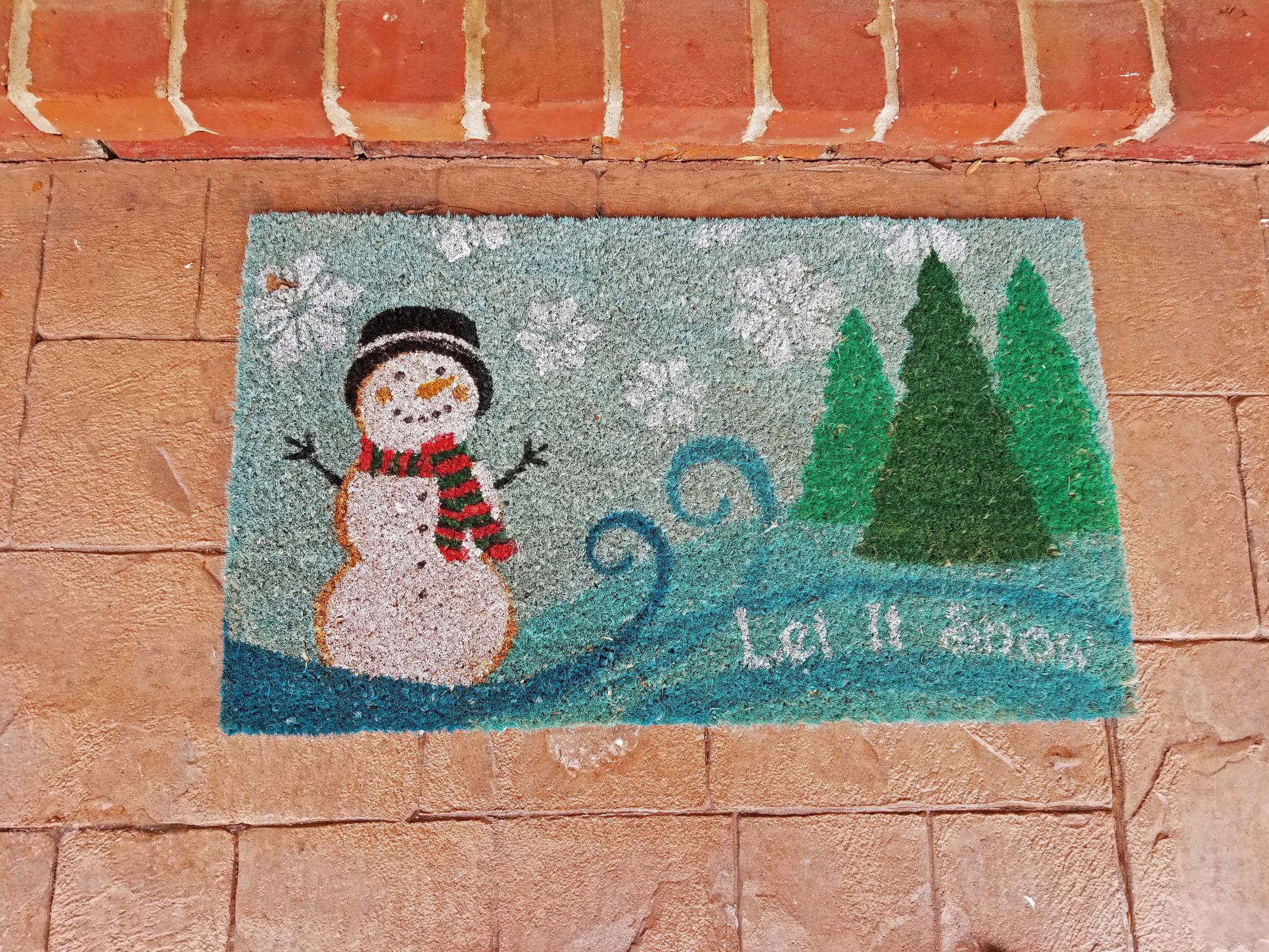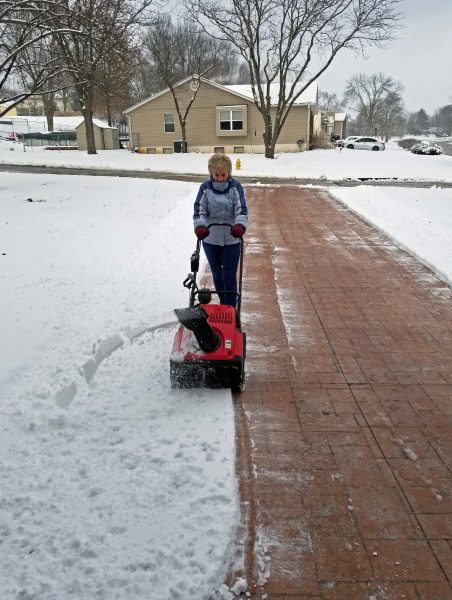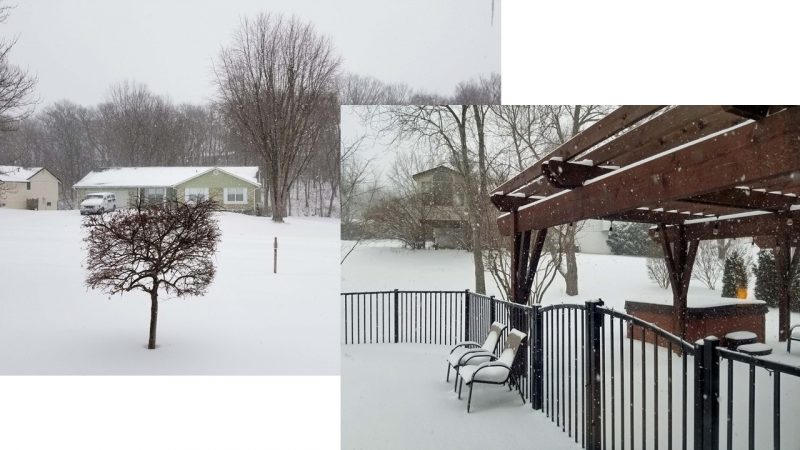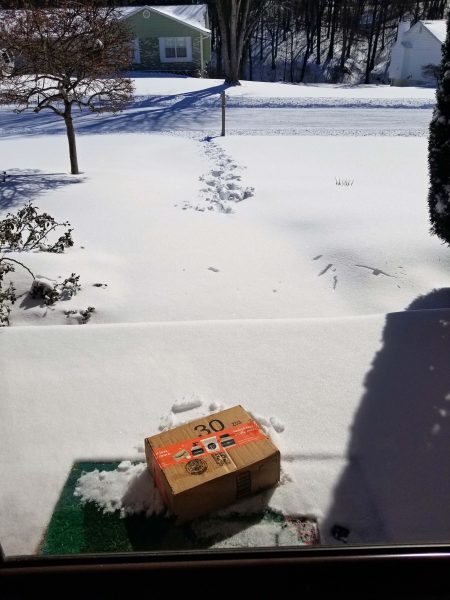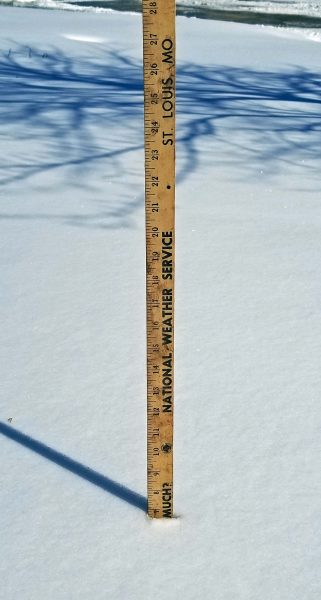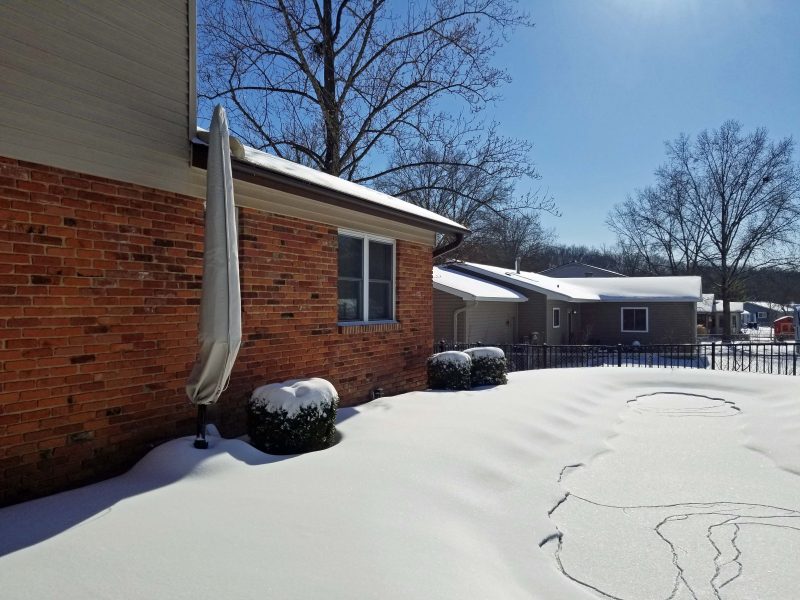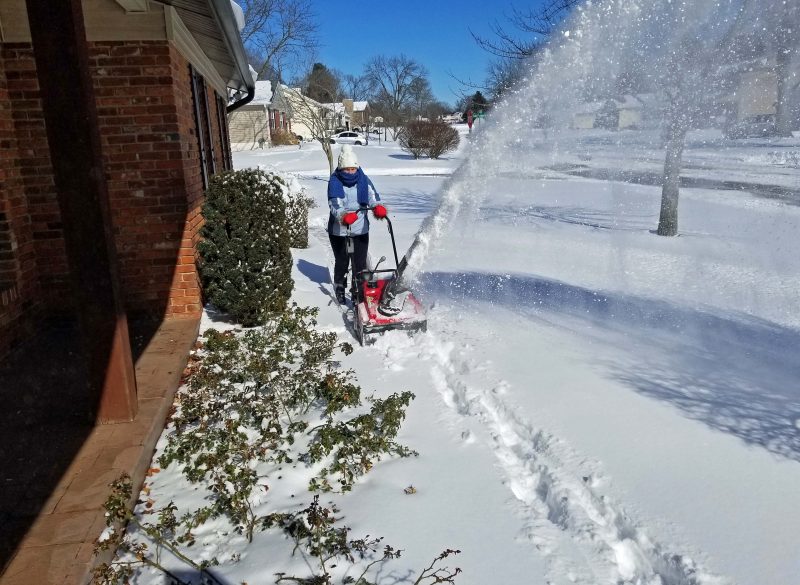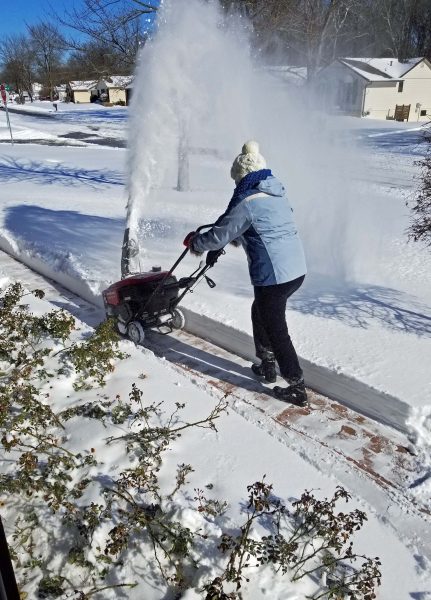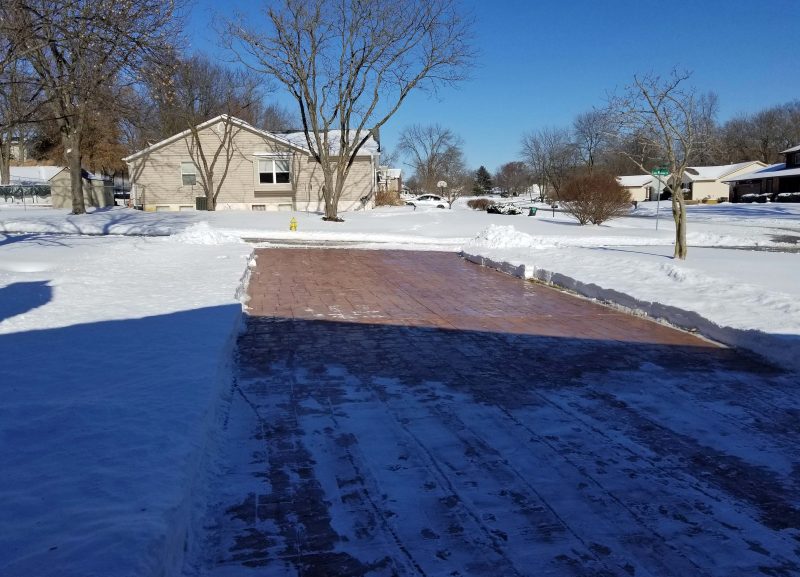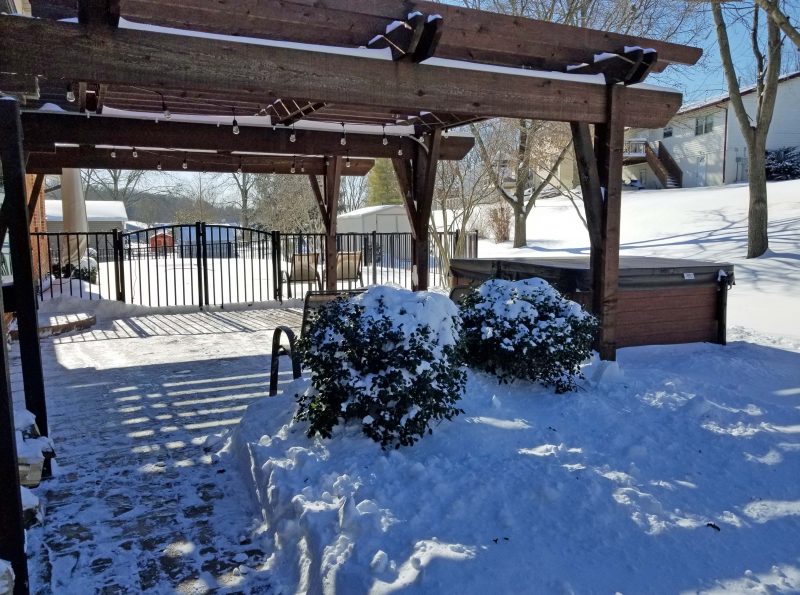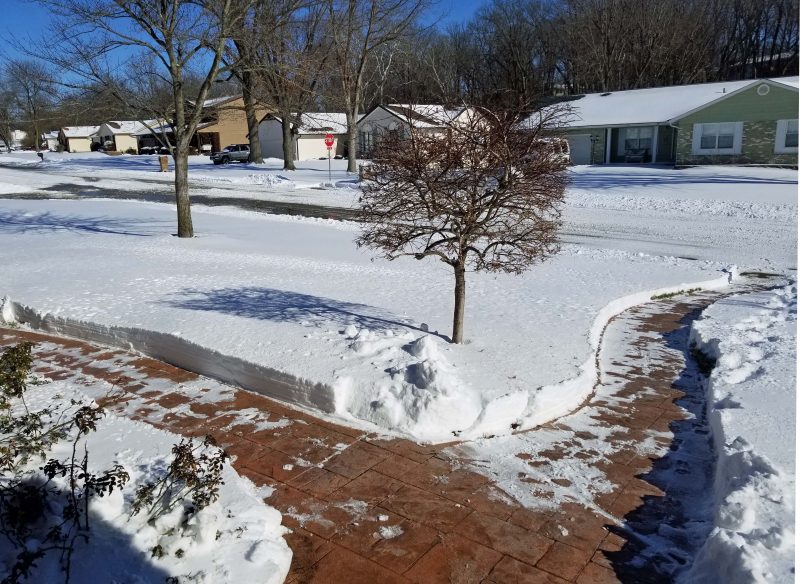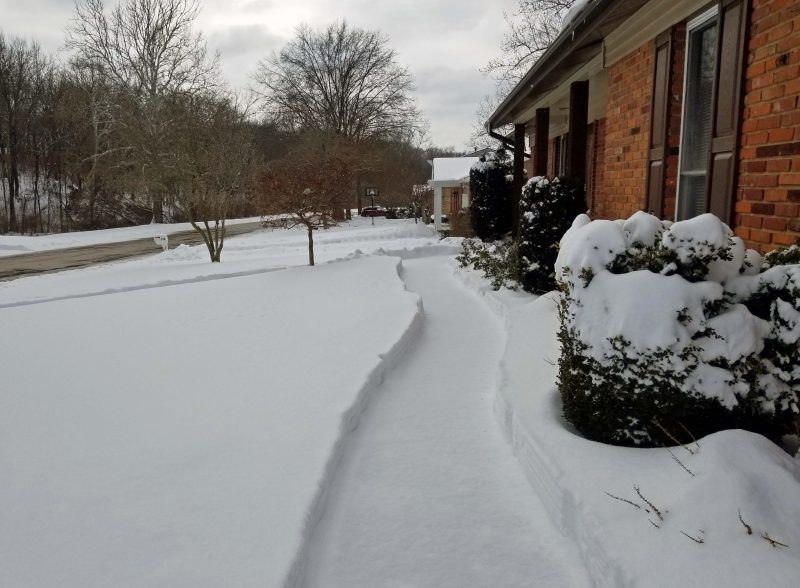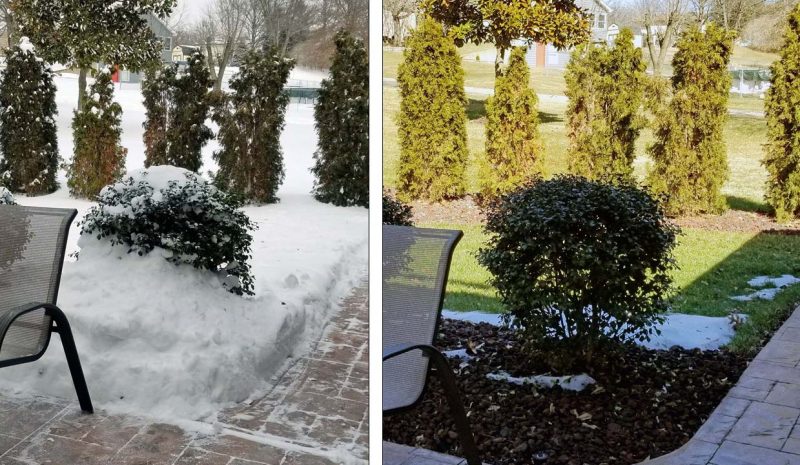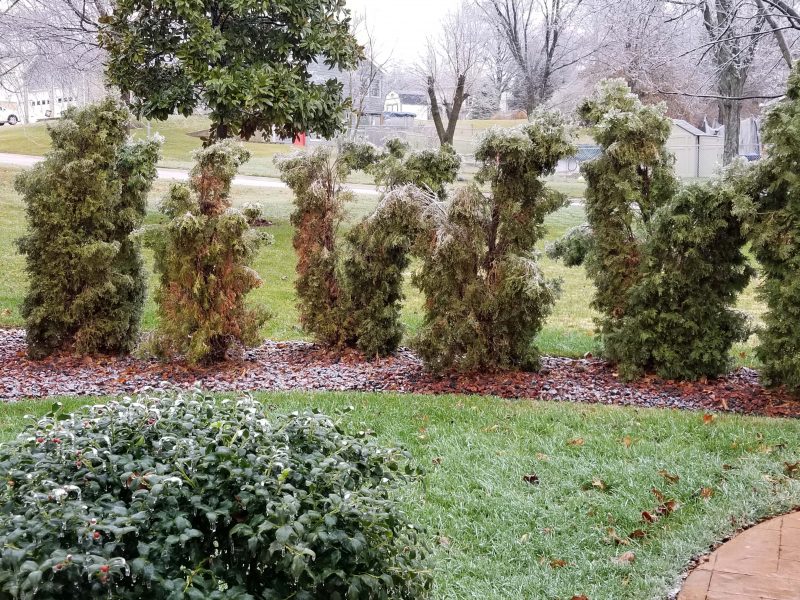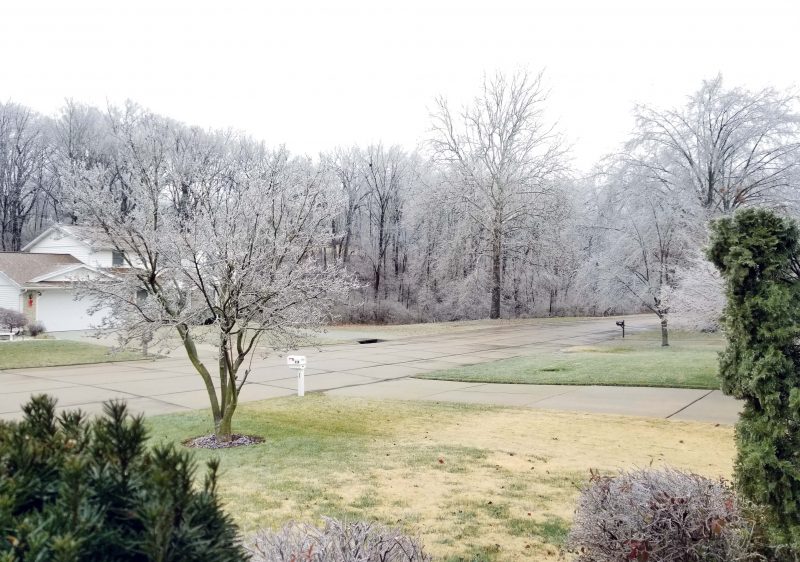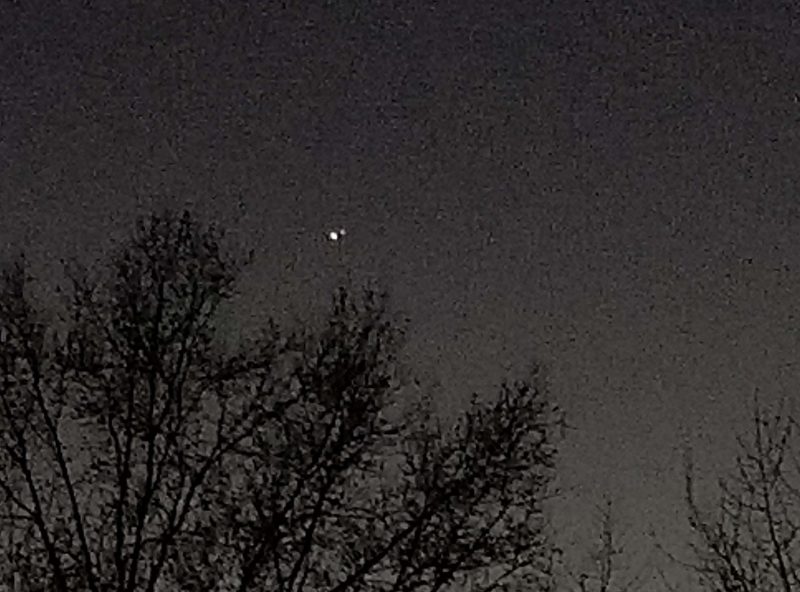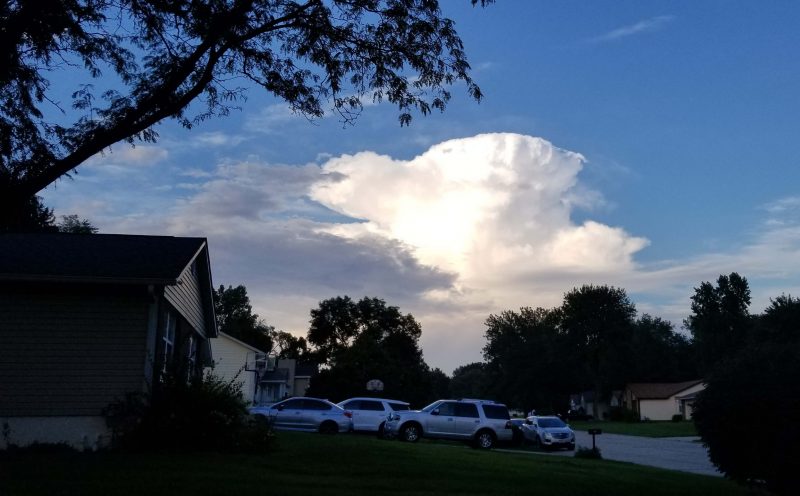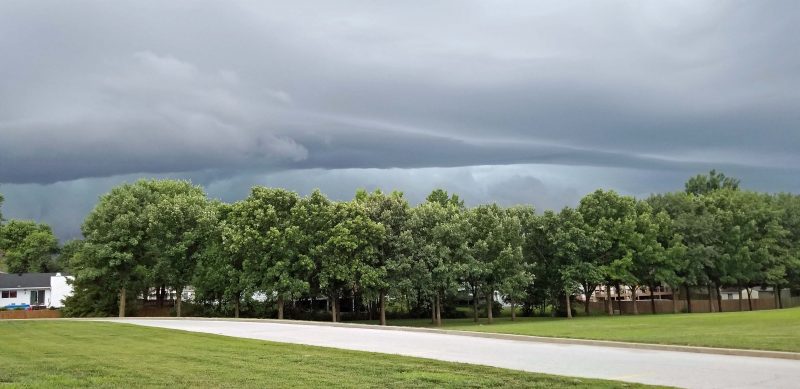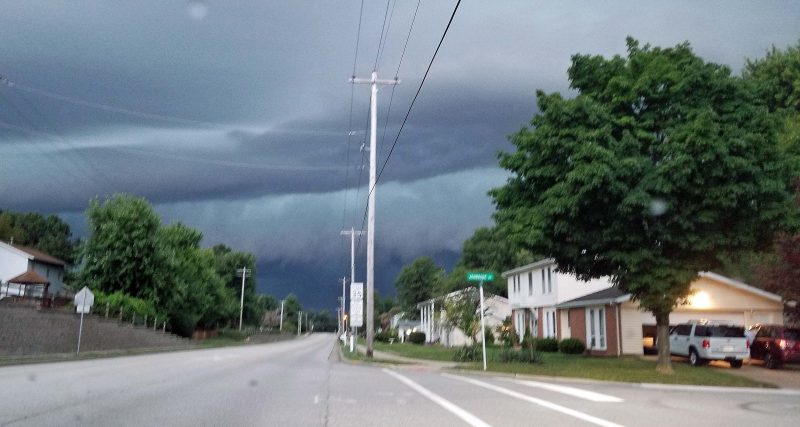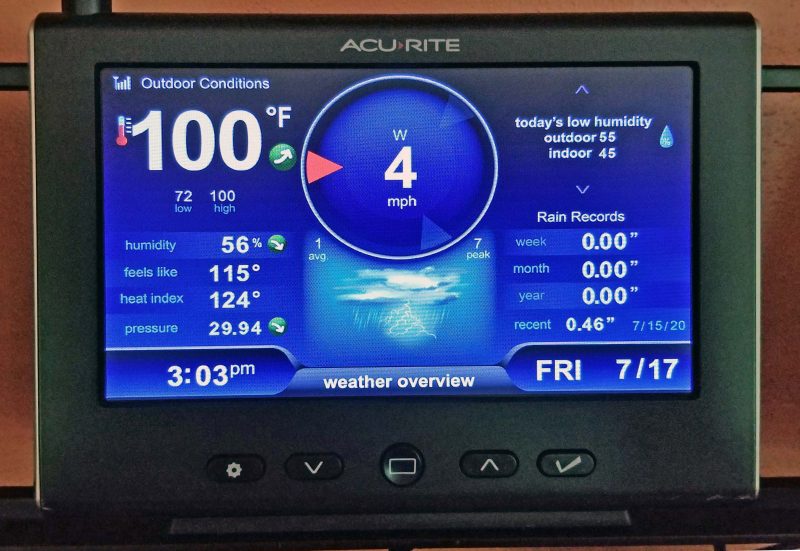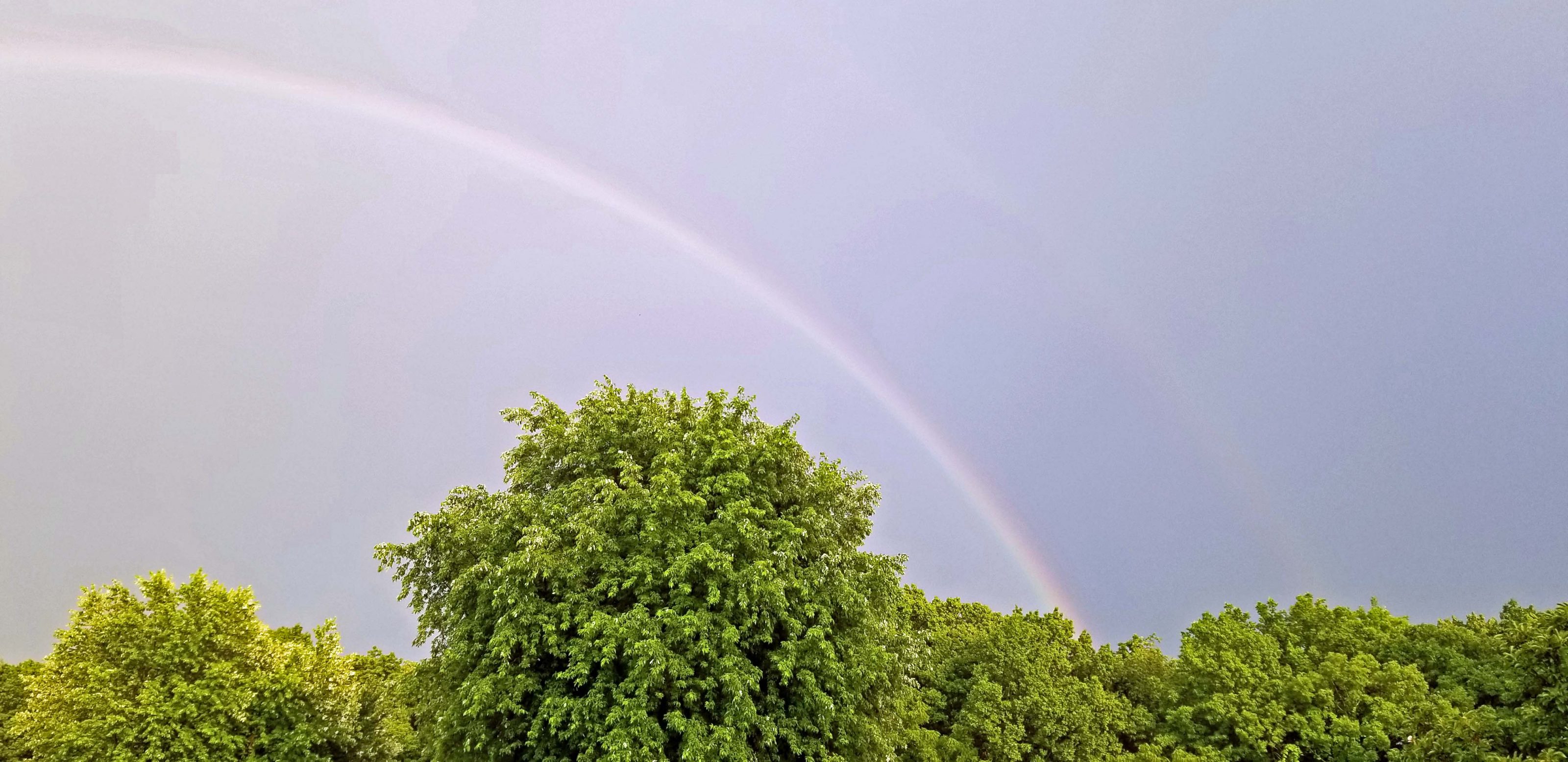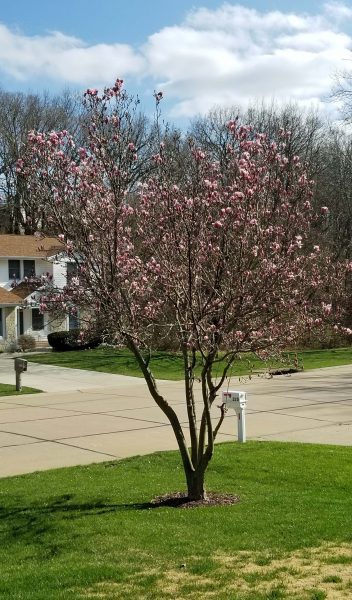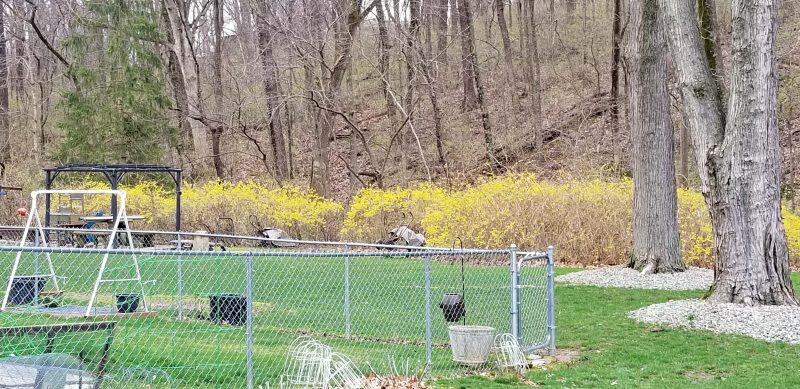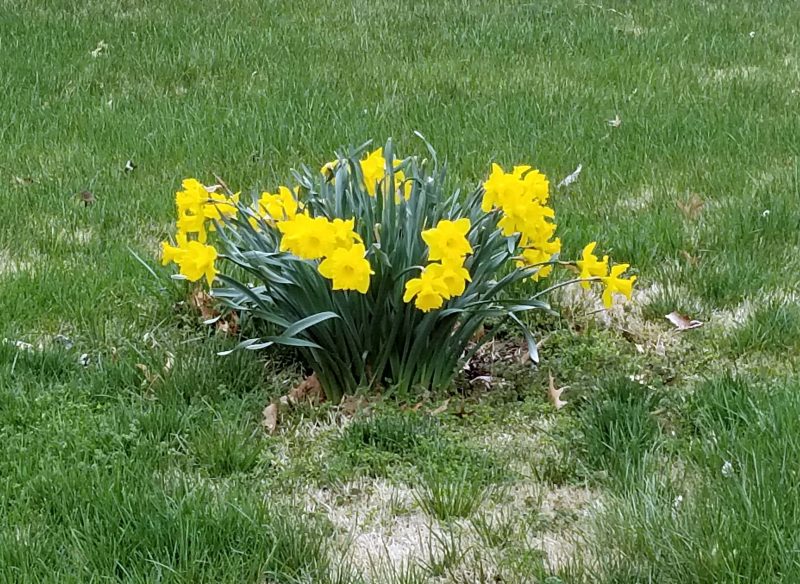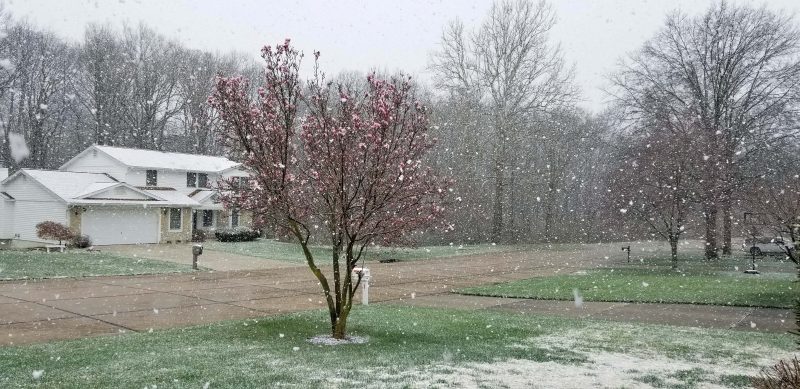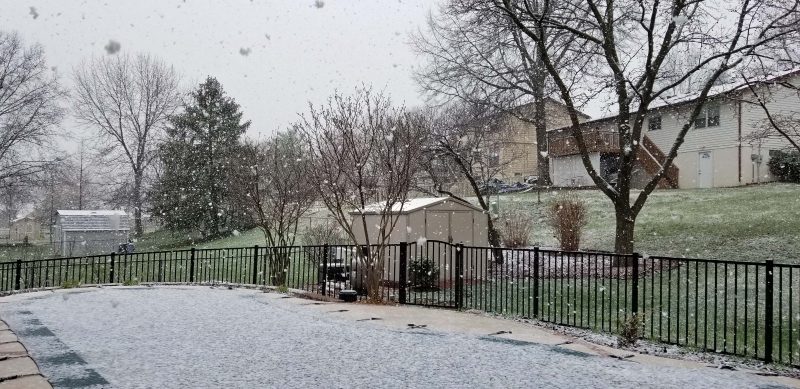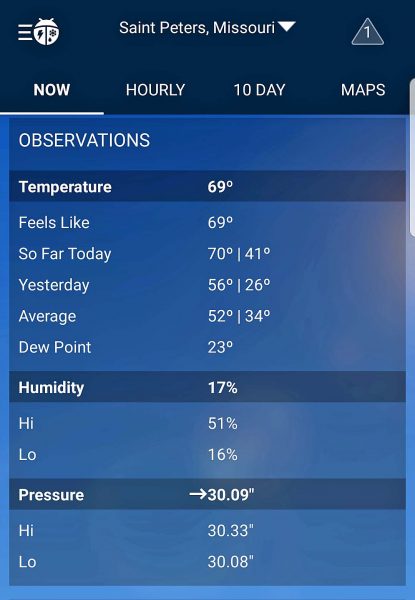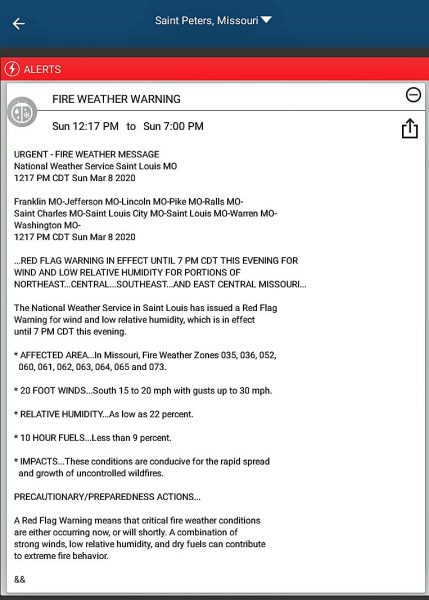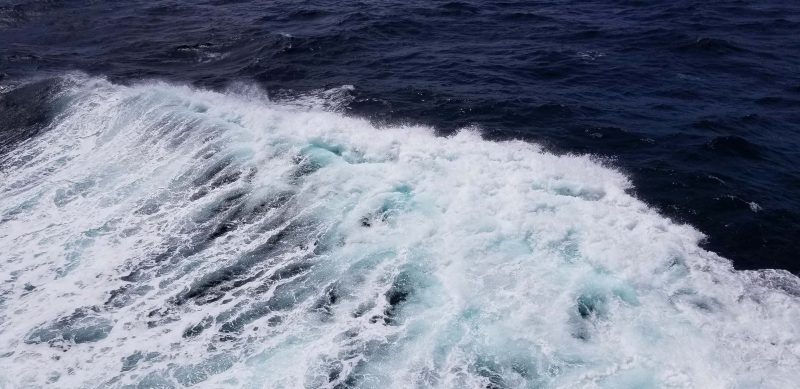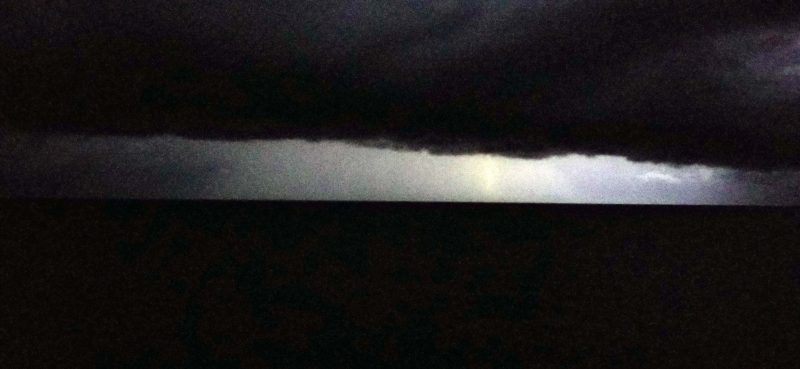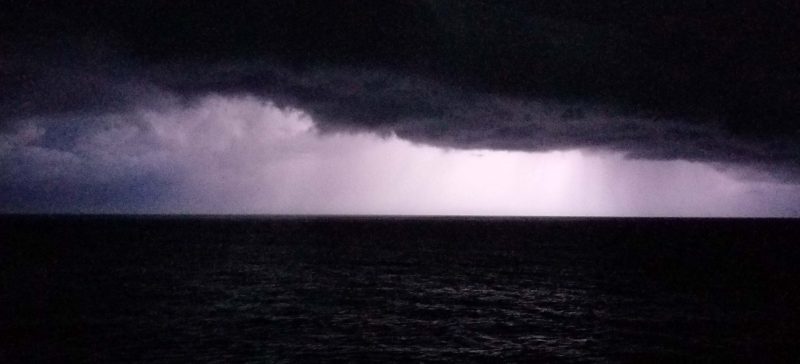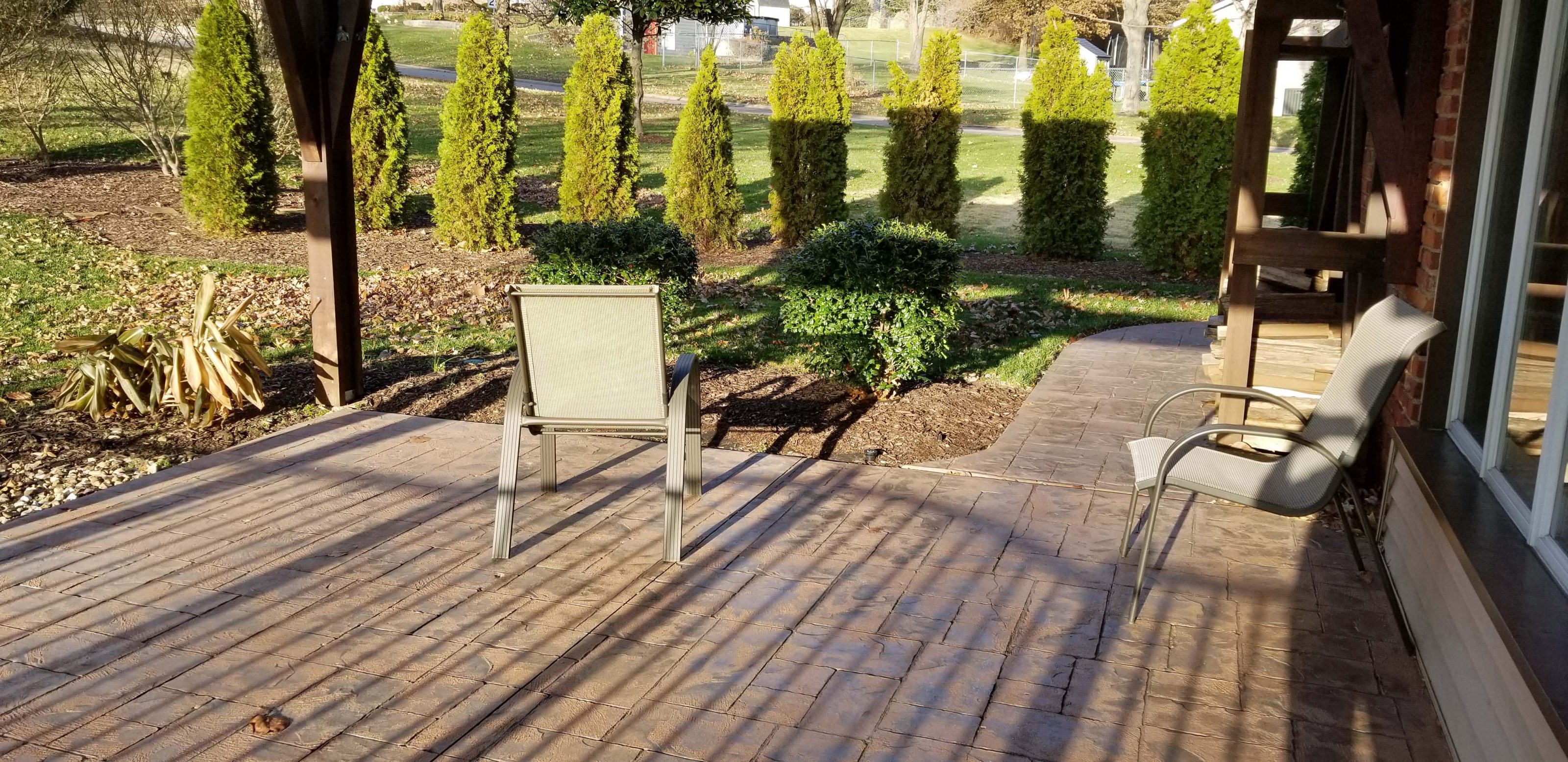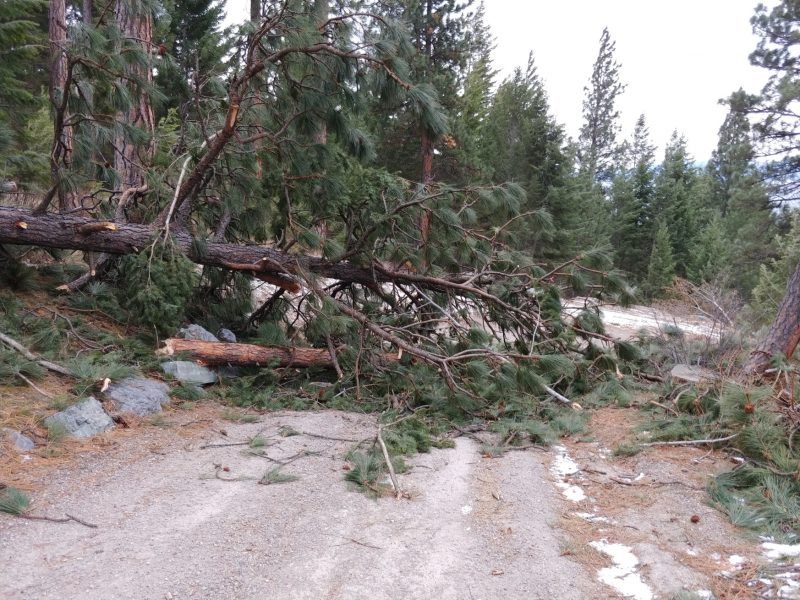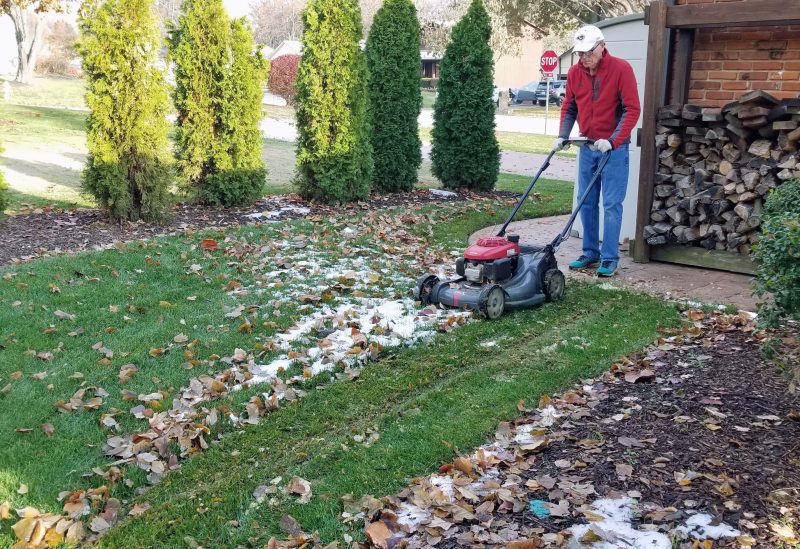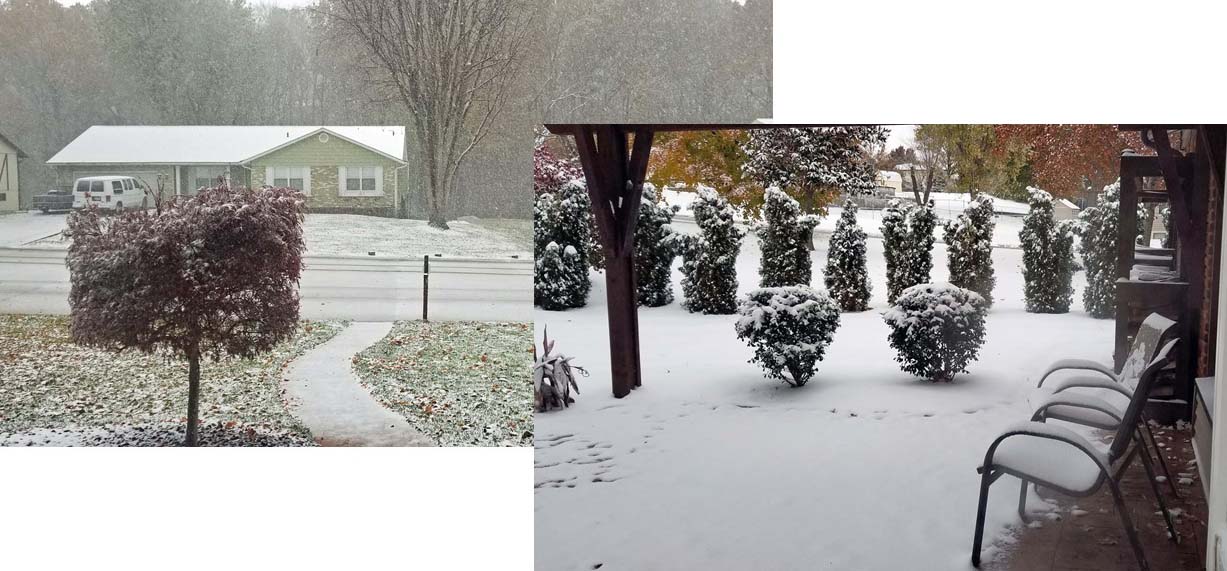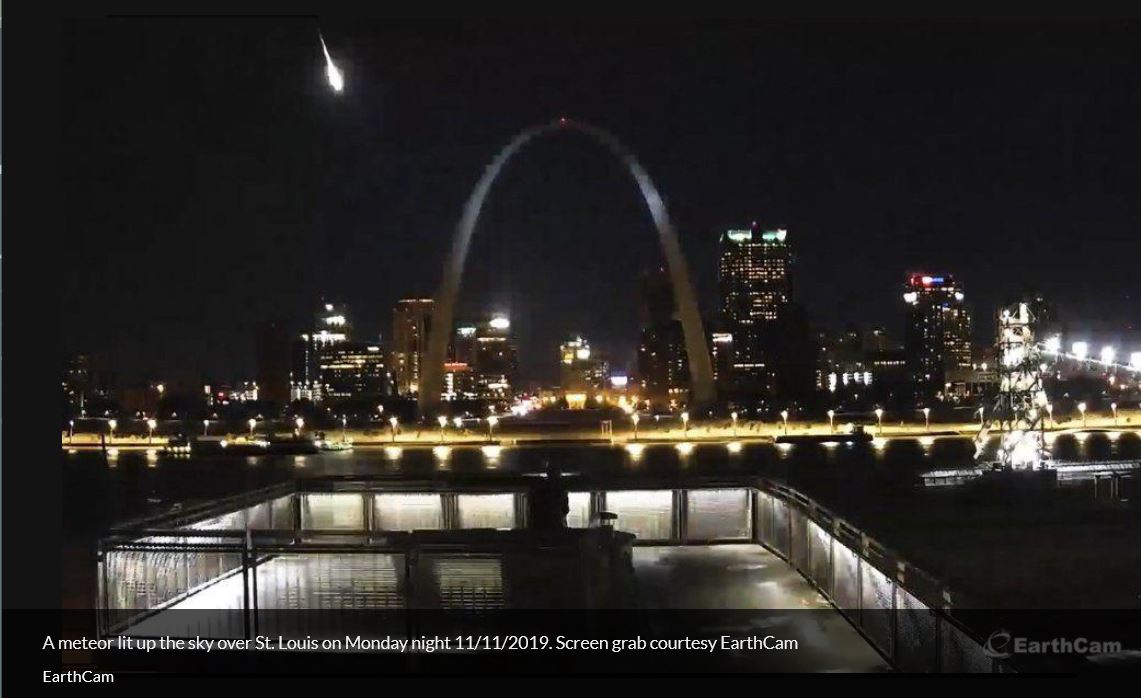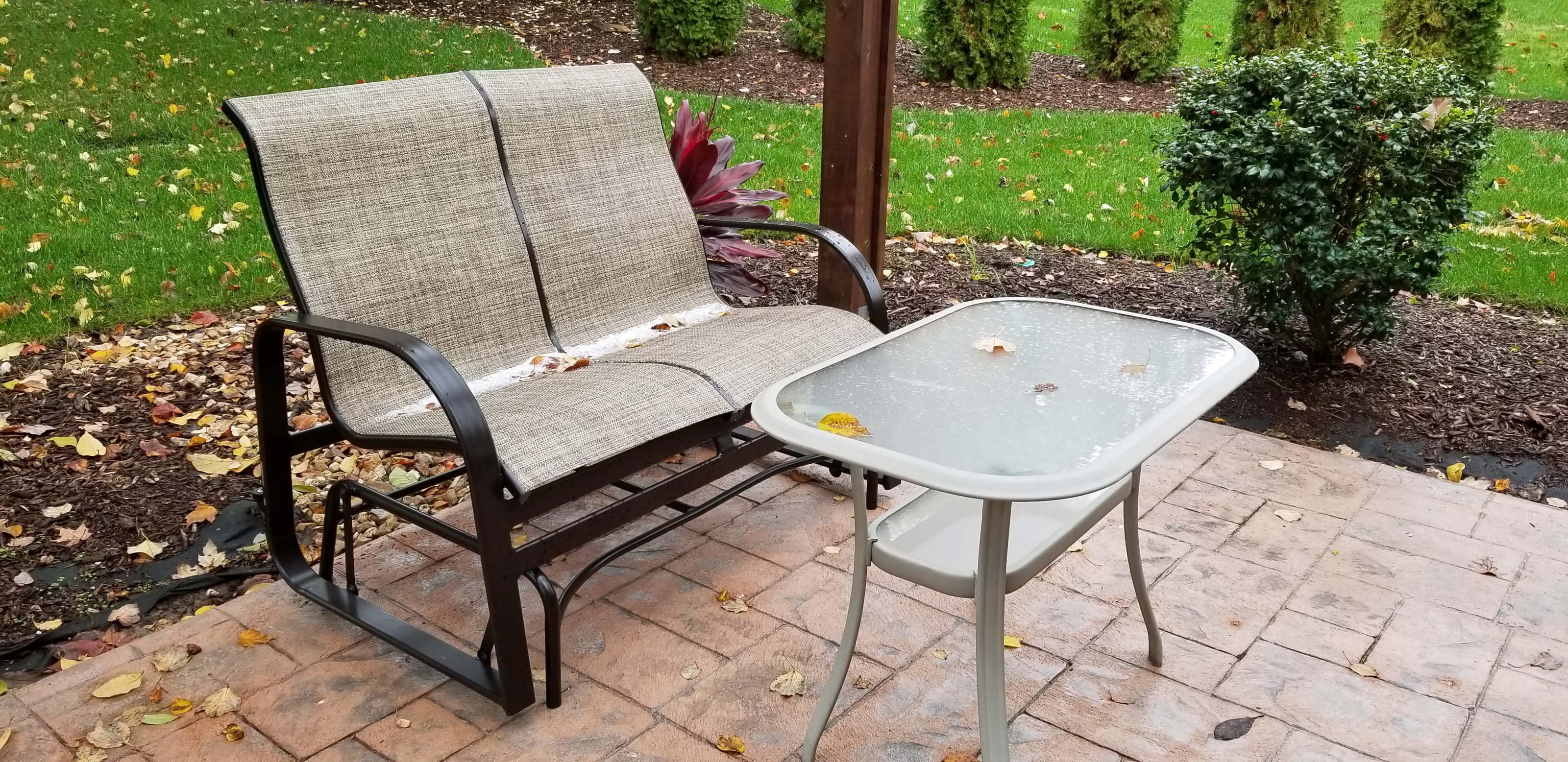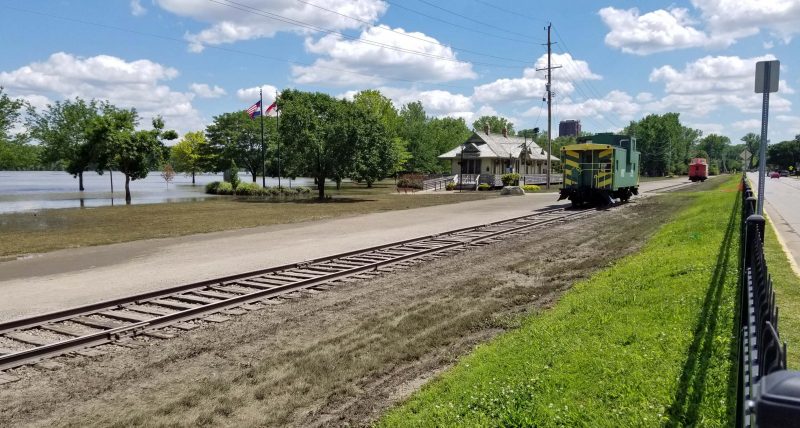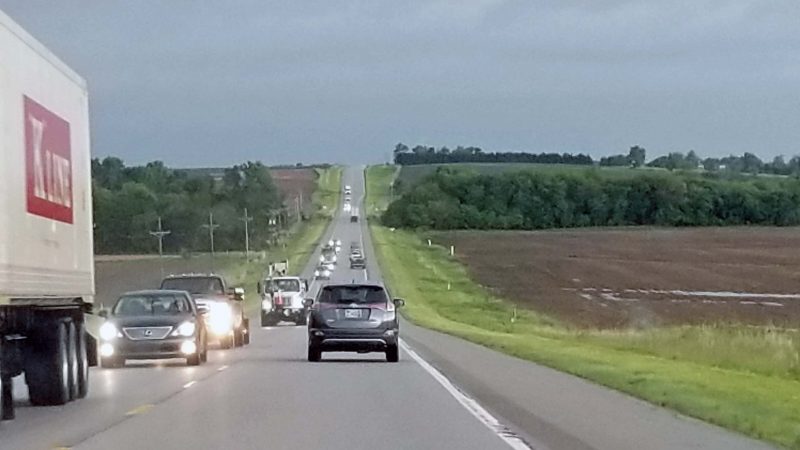As I was talking my daily walk on May 5, I saw this pretty cloud. Someplace east of us, thunderstorms were forming.

On May 15, I was driving to the mall to do some shopping and saw this huge cloud. I stopped to take a picture of it and to call Ted, telling him it would be worth his time to go to the top of the hill behind our house (less than a half-mile away) to give his meteorological heart a thrill.
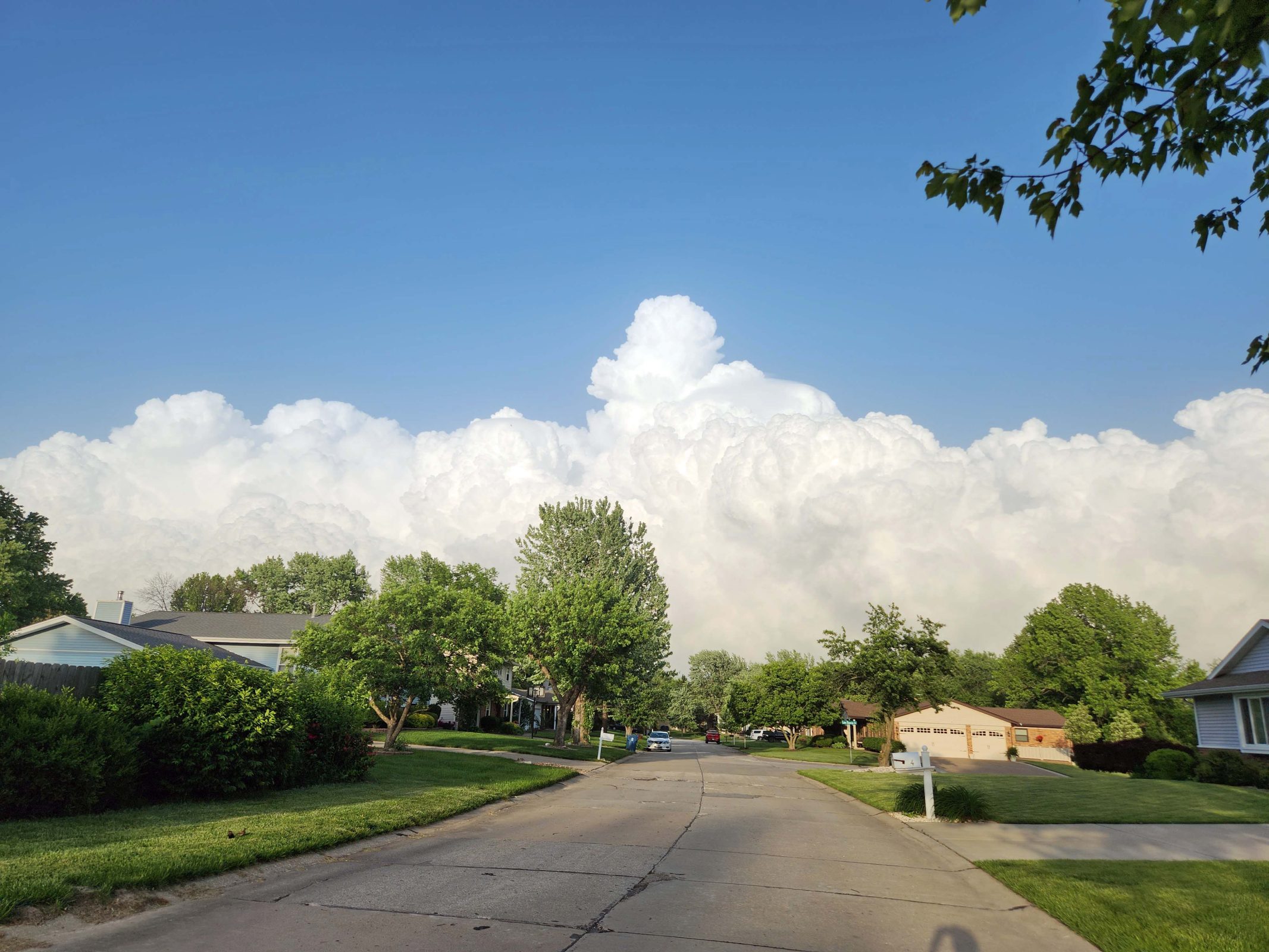
From near our house, the above cloud looked pretty amazing but when I got to the mall, which is on high ground with a big parking lot and no trees to block the view, I was awestruck. I couldn’t believe what I was seeing! This cloud extended 180 degrees from north to south on the eastern horizon. I have never seen a cloud that covered half of the horizon! Obviously, a line of thunderstorms was developing–probably in Illinois.
About an hour later, when I finished shopping, the sun was setting and it cast a rosy glow on the same cloud formation. The cloud still covered 180 degrees of the horizon and the thunderstorms were still developing. When I got home, Ted and I checked the radar and saw a solid line of severe thunderstorms stretching from just southeast of St. Louis to Chicago. Wow!

The next day, May 16, I needed to do some shopping at the Galleria in the Central West End area of St. Louis. There were some weather watches posted, but the storms were not expected to reach our area for another two hours–more than enough time for me make the trip and to be home before the storms hit. When I finished shopping, I checked the radar again to see if I should run some errands in our home area or if I should go straight home. It looked iffy, so I decided to make the call when I was closer to home.
The skies were gray when I left the Galleria, indicating an impending storm, but the weather didn’t look dangerous. As I drove farther west, the sky became very dark for a while but then became lighter when my route turned to the north. About halfway home, the rain hit. It was pretty heavy, so my wipers were working rapidly. I made the call to go straight home and to finish my errands after the storm. When I was about two miles from home, the wind hit, blowing sheets of rain across the roads. About a half mile from home, the hail started falling. It was pretty small hail–about 1/4-1/2 inch in size–but I didn’t want hail damage on my new car. With no other cars in sight, I admit that I exceeded the speed limit for the half mile from that point to our garage, where I could put my car under a roof, safe from the hail. It was a good call to skip my home-area errands!
Here’s how the hail looked in our pool. It fell hard enough that some pieces of hail bounced when they hit the surface of the water, then fell back down into the water. It looked like white jumping beans. Our largest hail was 1.5 inches, in flat pieces. Hail covered our lawn, but not completely.
After the storm, I went to Target (I had a lot of errands to do that day) and I overheard a lady and her husband telling a salesperson that they lived only a few miles south of Target and had an 18 to 24-inch accumulation of hail on the ground! The lady said she had gardening buckets outside that were filled and then covered with hail! Their 5- or 6-year-old daughter piped up and said, “It was really deep!” Their largest hail was baseball-sized.
When the hail stopped falling, the wind became apparent. Fortunately, we live in a valley between two hills–one behind our house and one across the street from the front of our house, so we tend to be sheltered from wind. Today, however, the wind blew the pool water surface as if it were a lake (without the whitecaps).
Meanwhile, east of us, a tornado struck very close to the Galleria Mall, where I had been shopping 30 minutes earlier. Looking at the radar when I got home, I saw that I basically drove around the tornado development area (where the skies became very dark) and, thankfully, didn’t need to take cover during my drive home. These are photos of the wedge tornado that struck St. Louis, taken by a camera in the Gateway Arch. The lower photo is darker because the tornado is closer and the air is filled with more debris. The red arc-shaped structure in the lower left corner of the photo is Busch Stadium.
A wedge tornado has a width equal to its height. This one was an EF3 tornado a mile wide, moving at 55 mph, with winds of 152 mph. It traveled 8 miles through the Central West End of the St. Louis area, destroying a 20-block area and damaging roughly 5,000 buildings. It struck along the north side of Forest Park and caused extensive damage to the St. Louis Zoo, which is temporarily closed as a result. The tornado initially touched down in Clayton, then tracked 23 miles to the northeast into Illinois. Sadly, there were 5 fatalities in St. Louis due to the tornado.

An EF4 tornado struck Lambert Airport in April 2011, and the damage in that area was visible for years. This tornado struck a more commercial and more densely populated area, so I suspect the recovery will, again, be a lengthy process. A few weeks ago, Jeff wrote a mission letter suggesting that we all look for the small miracles that occur in our lives each day. Today, my pretty big miracle was leaving the Galleria Mall when I did and arriving safely at home.


